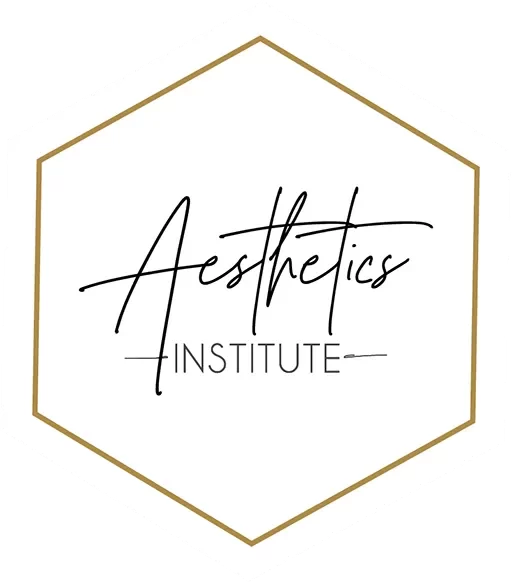AESTHETICS INSTITUTE
Services, Skills, and Modalities Advanced Esthetics
The online skincare theory portion of the Advanced Esthetics program is paired with our in-house, hands-on, technology-supported training, where each student focuses on mastering the services, skills, and modalities included in the course.
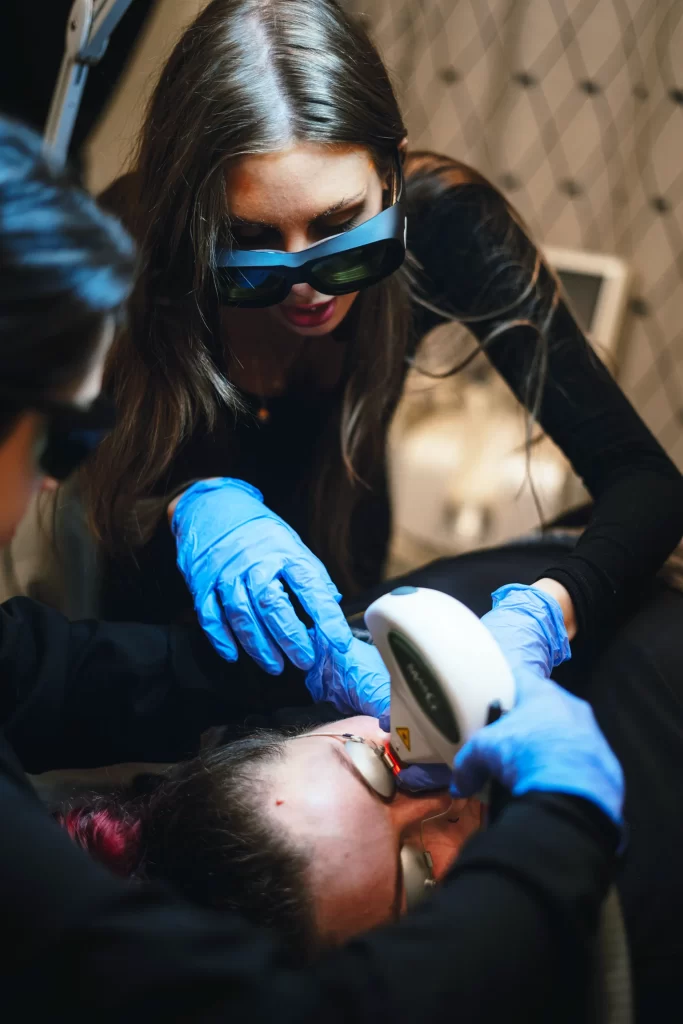
Alongside our expert instructors, students will learn and operate cutting-edge equipment, utilize professional-rated and FDA-approved technology, and provide high-demand services to real clients at our industry-leading medical spa facilities.
Services, Skills, and Modalities included in Advanced Esthetics:
- Intense Pulsed Light (IPL) Photorejuvenation & Dyschromia
- Microneedling Treatments and Modalities
- Radio Frequency Microneedling Treatments
- Radio Frequency Body Contouring & Cellulite Reduction Treatments
- Radio Frequency Skin Tightening Treatments
- Non-Ablative Fractional Laser Resurfacing Treatments
- Laser & IPL Hair Removal Treatments
- Non-Ablative Laser Tattoo Removal Treatments
- Advanced Dermaplaning Procedures
- DiamondGlow Microdermabrasion Treatments
- Advanced Skin Analysis Technologies
- Jessner's Advanced Chemical Exfoliation
- MandeliClear Advanced Chemical Exfoliation
- DermaFrost Advanced Chemical Exfoliation
- Medical Terminology & Charting
- Pre & Post-Client Care Protocols
- CPR & First Aid Certification
- Clinical Photography Skills
- Client Consultations & Procedures
- Laser Safety Training Officer Guide
The Aesthetics Institute provides additional certifications as well as the standard certifications required by the state of Oregon to become an Advanced Esthetician.
We include these certifications in our program at no additional cost because we know these are the skills that are most sought-after by employers.
These additional certifications include:
Here we have created a brief overview of each of the services, skills, or modalities our students are expected to learn to graduate from our Advanced Esthetics program.
Because our focus is hands-on learning and safety, it is essential for current estheticians and prospective students to know what medical spa services, skills, and pieces of equipment they will be expected to be proficient in using upon graduation from our school.
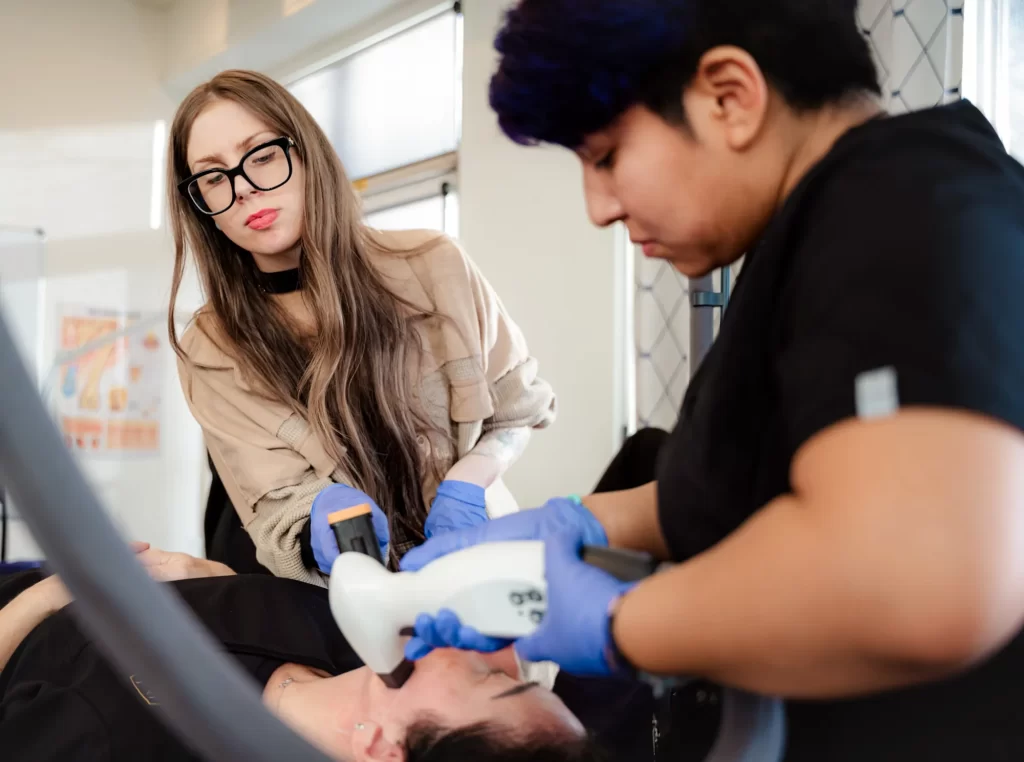
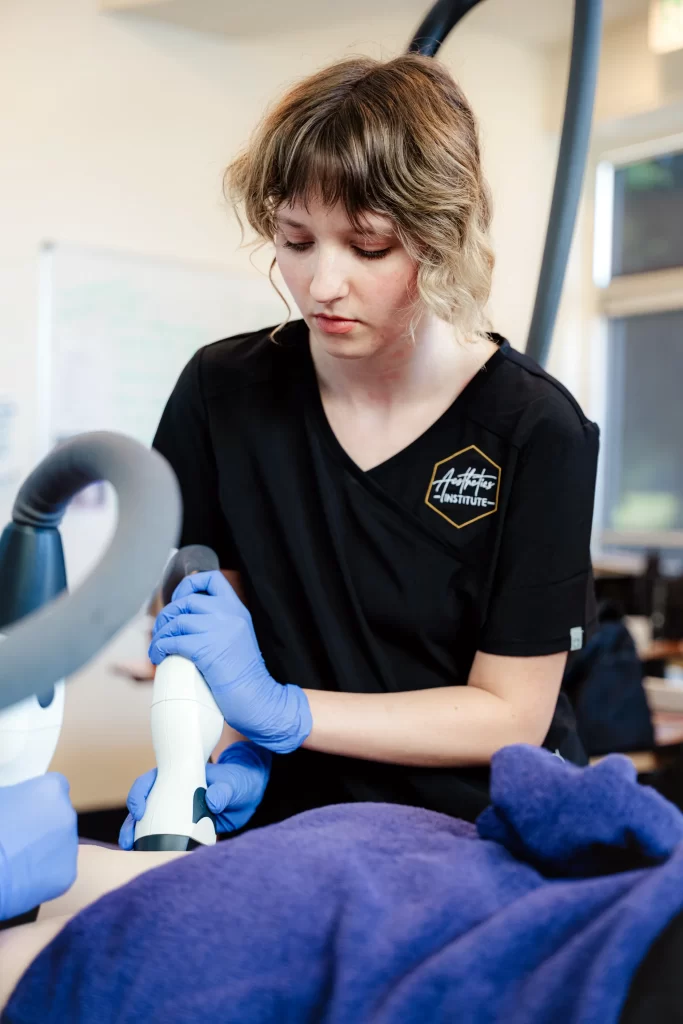

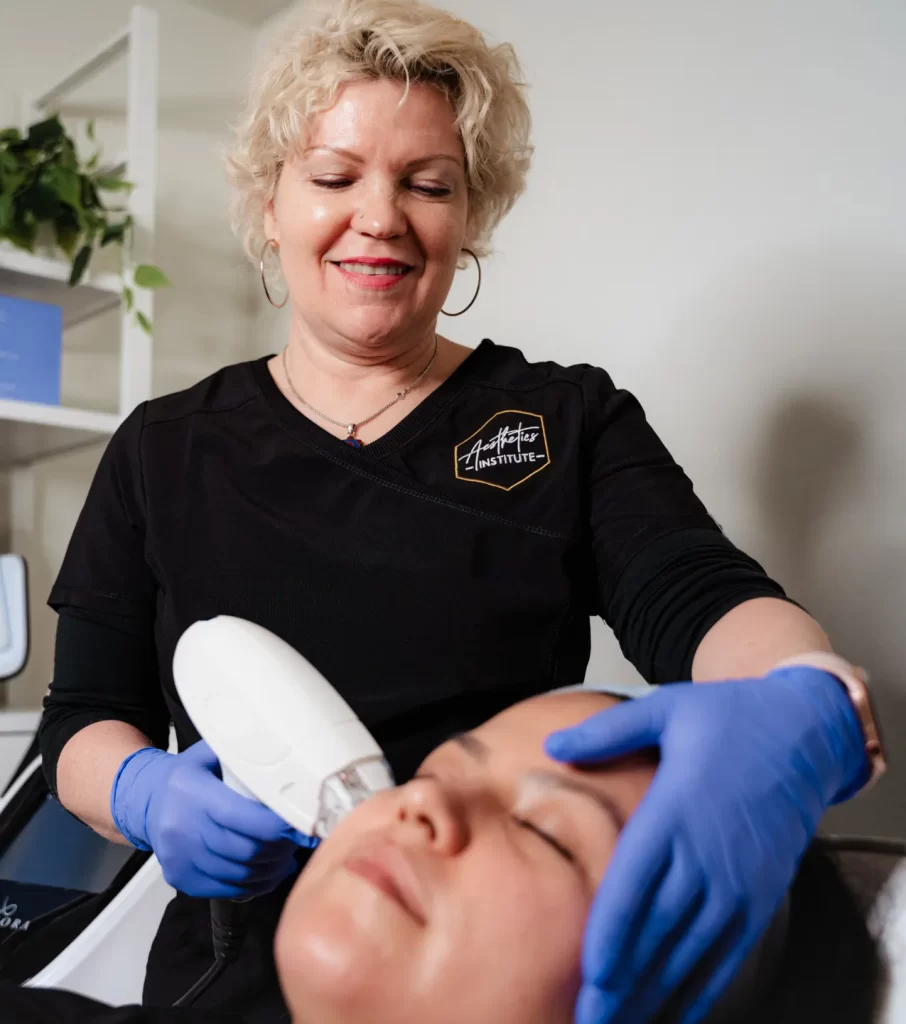
Each student will learn all of these skills, services, and modalities as a graduate of the Aesthetics Institute, and every single one of them are included in our Advanced Esthetics course at the listed price.
The Aesthetics Institute heavily invests in cutting-edge technology and equipment and stays up on the latest trends in the beauty industry to make sure that our students are learning the services and skills that make them highly competitive in the job market.
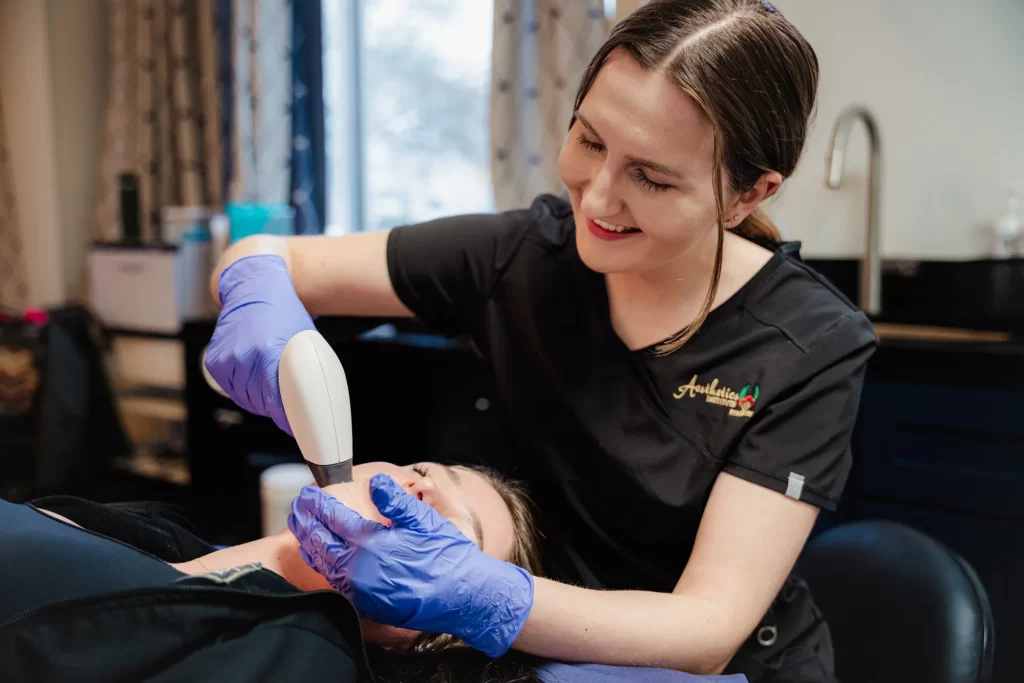
Services, Skills, and Modalities included in Advanced Esthetics:
- Intense Pulsed Light (IPL) Photorejuvenation & Dyschromia
- Microneedling Treatments and Modalities
- Radio Frequency Microneedling Treatments
- Radio Frequency Body Contouring & Cellulite Reduction Treatments
- Radio Frequency Skin Tightening Treatments
- Non-Ablative Fractional Laser Resurfacing Treatments
- Laser & IPL Hair Removal Treatments
- Non-Ablative Laser Tattoo Removal Treatments
- Advanced Dermaplaning Procedures
- DiamondGlow Microdermabrasion Treatments
- Advanced Skin Analysis Technologies
- Jessner's Advanced Chemical Exfoliation
- MandeliClear Advanced Chemical Exfoliation
- DermaFrost Advanced Chemical Exfoliation
- Medical Terminology & Charting
- Pre & Post-Client Care Protocols
- CPR & First Aid Certification
- Clinical Photography Skills
- Client Consultations & Procedures
- Laser Safety Training Officer Guide
Intense Pulsed Light (IPL) Photorejuvenation & Dyschromia Reduction Treatments
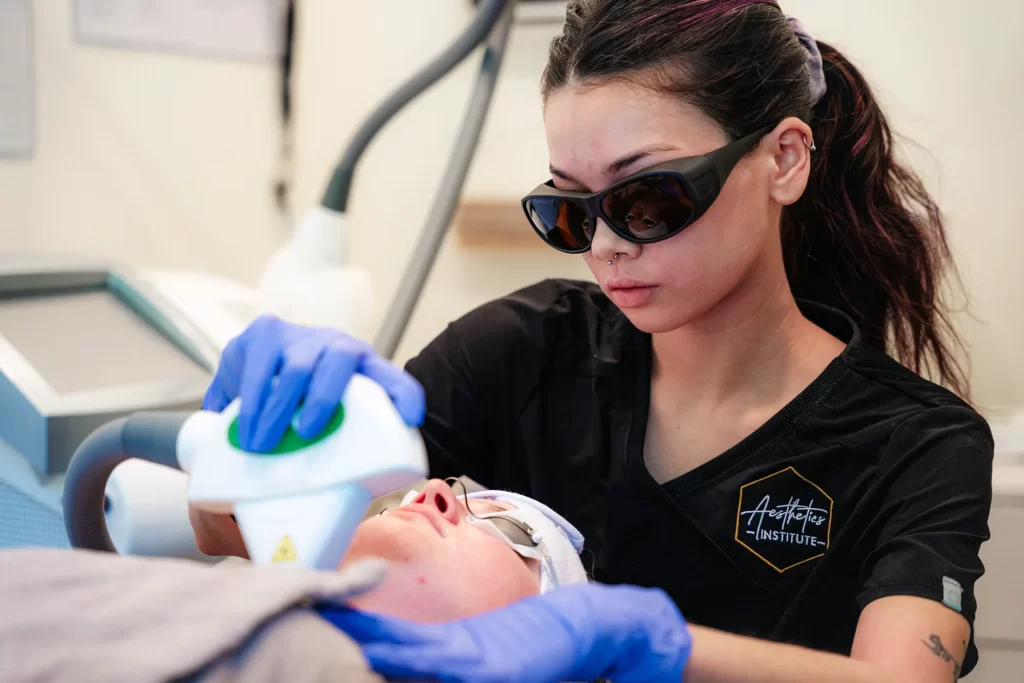
Broadband light is pulsed into the skin to target melanin for hyperpigmentation and oxyhemoglobin for redness using a variety of wavelengths to reach different depths in the skin.
The melanin or oxyhemoglobin absorbs the light and converts it into heat, damaging the cells and triggering the body’s wound-healing process.
Over two weeks following the treatment, the treated tissue will be absorbed back into the body or will come up to the skin’s surface to flake off its pigmentation, leaving behind even, radiant skin.
The spectrum of light used in these treatments is lower and has a more gentle level of LED lights than other skin regenerating services. This service is also known as Light Therapy or Photodynamic Therapy. This therapy is recommended to improve the appearance and quality of the skin.
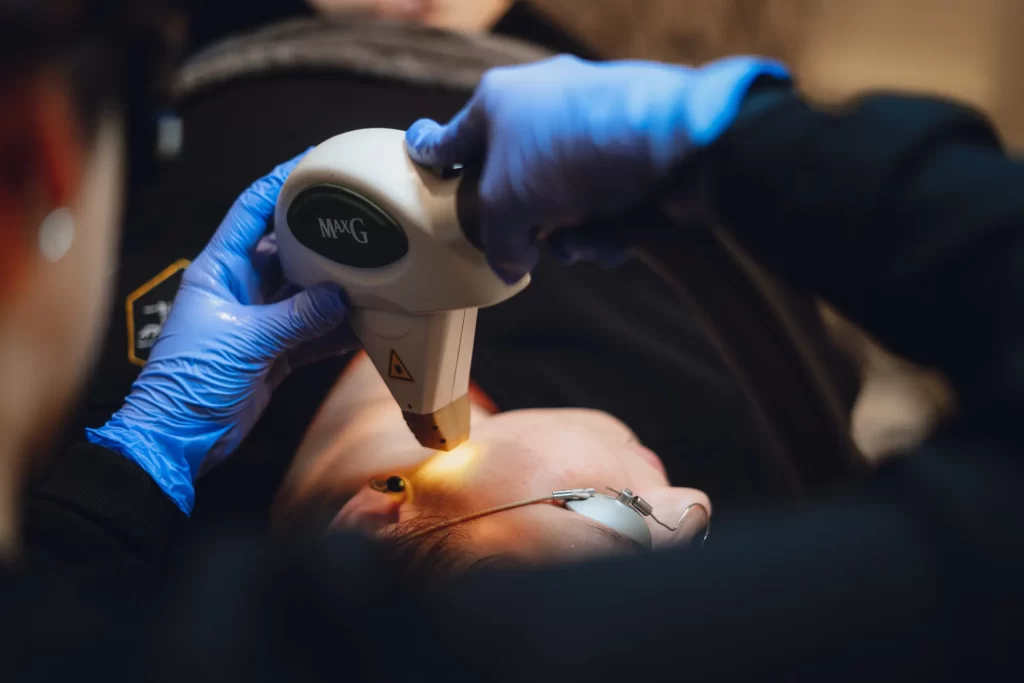
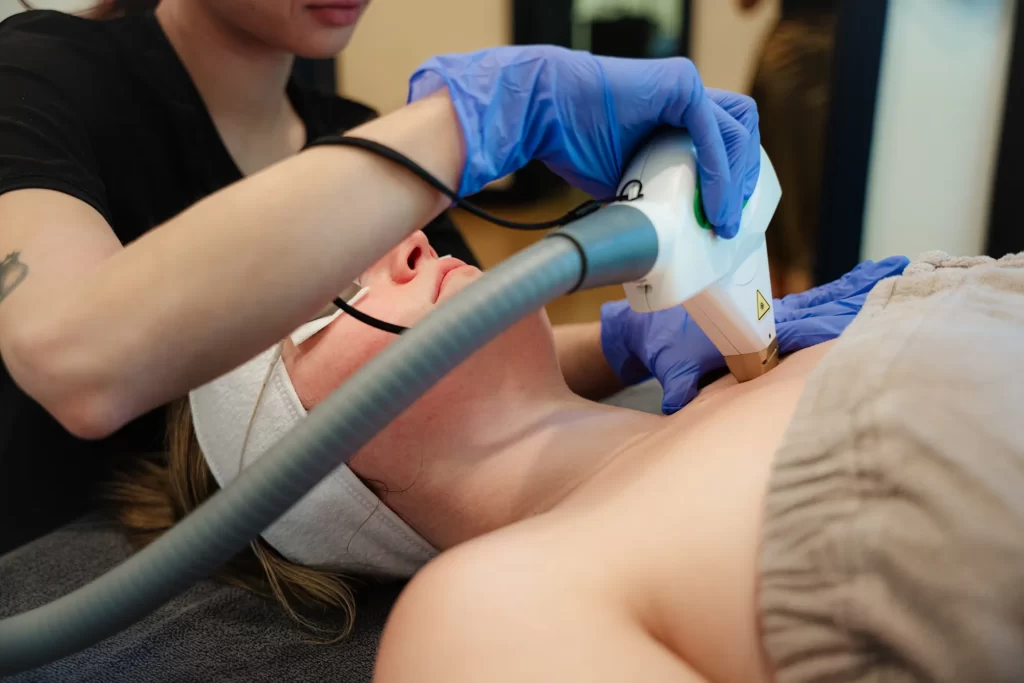
Dyschromia reduction is different than photo rejuvenation. Instead of focusing on multiple treatment areas, dyschromia reduction is solely used to treat pigmentary issues.
These conditions include irritation and redness, Angiomas, Couperosed skin, telangiectasia, rosacea, sun damage, sun spots, and melasma.
Watch students learning IPL treatments:
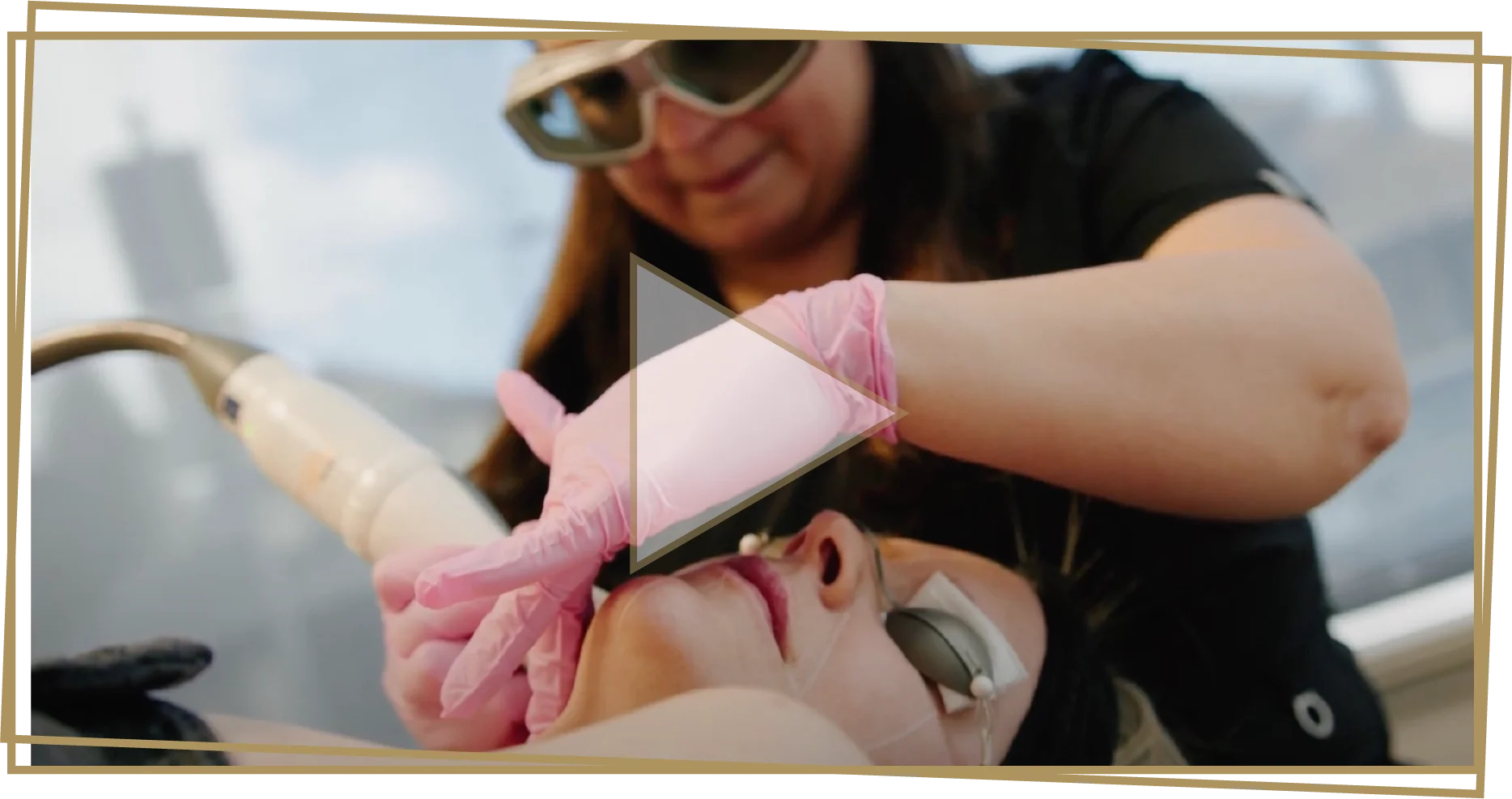
Microneedling Treatments and Modalities

The treatment uses a sterile set of tiny needles to create micro-injuries and acute inflammation in the skin. This advanced skin treatment can create as much collagen as you lose in one whole year after just one treatment.
The science behind this service is stated in its name: “Collagen Induction Therapy.” The microneedle device contains tiny needles that oscillate into the skin, creating a “micro-injury” at different depths based on the client’s specific treatment plan and skincare goals.
As an intended side effect, the body’s natural wound-healing response is activated, and as part of that process, the stimulation of collagen and elastin is initiated within the layers of the skin.
Microneedling can be done superficially or more aggressively, depending on the skin condition it addresses. This treatment is great for improving fine lines and wrinkles and creates results that can rival a mild laser resurfacing without the lengthy downtime associated with that service category.

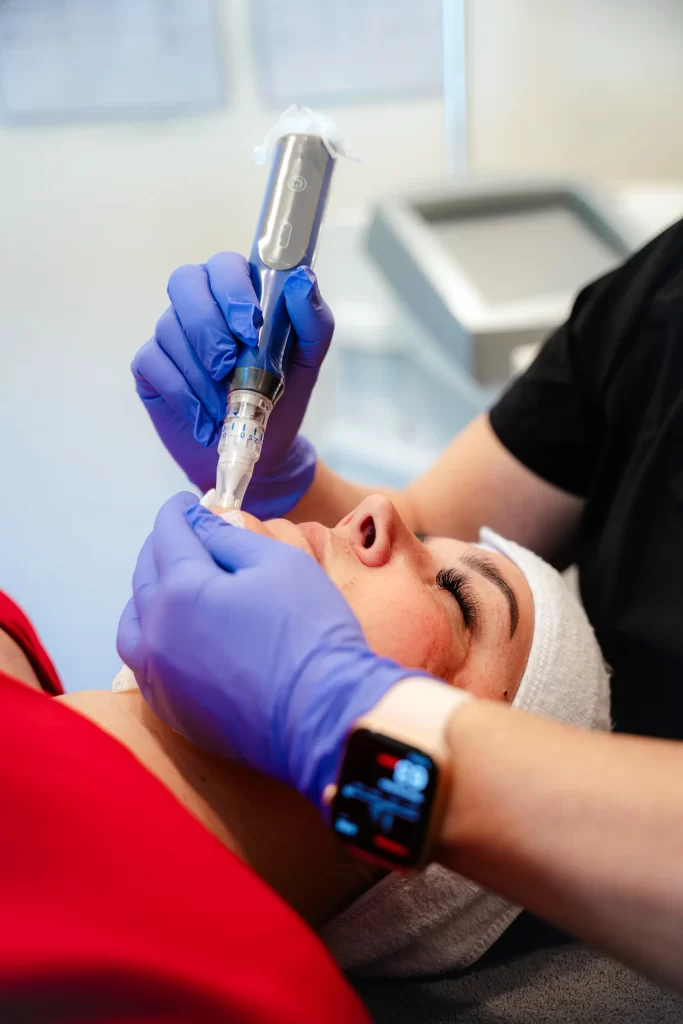
Microneedling also aids in treating pigmentary conditions such as hyperpigmentation, post-inflammatory hyperpigmentation, and melasma.
The Aesthetic Institute teaches our Advanced Esthetics students how to treat scarring from injury, acne, surgery, and stretch marks and to aid with mild to moderate skin tightening.
Watch students learning microneedling:
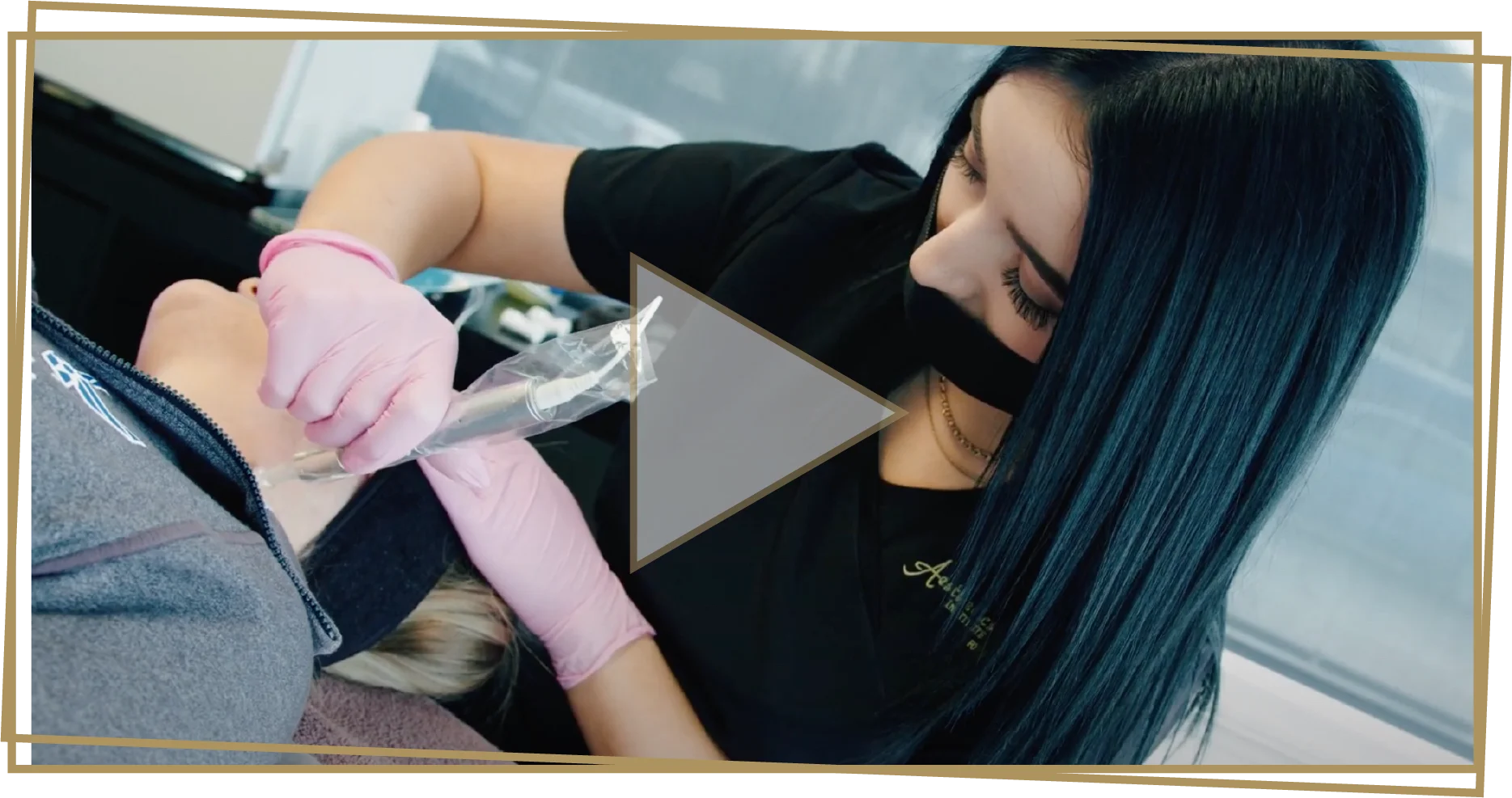
Radio Frequency Microneedling Treatments
Microneedling creates controlled micro-injuries in the skin, stimulating collagen production.
When combined with Radio Frequency energy, the heat generated further amplifies the collagen-inducing effects.
This synergy leads to more robust and pronounced skin rejuvenation results compared to standalone treatments.
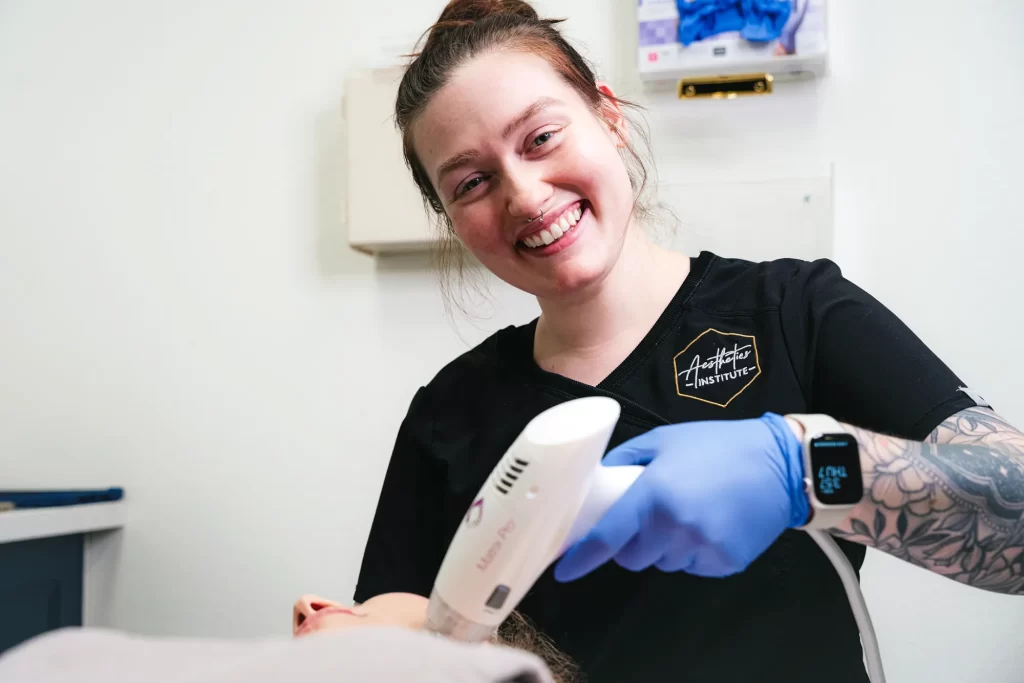
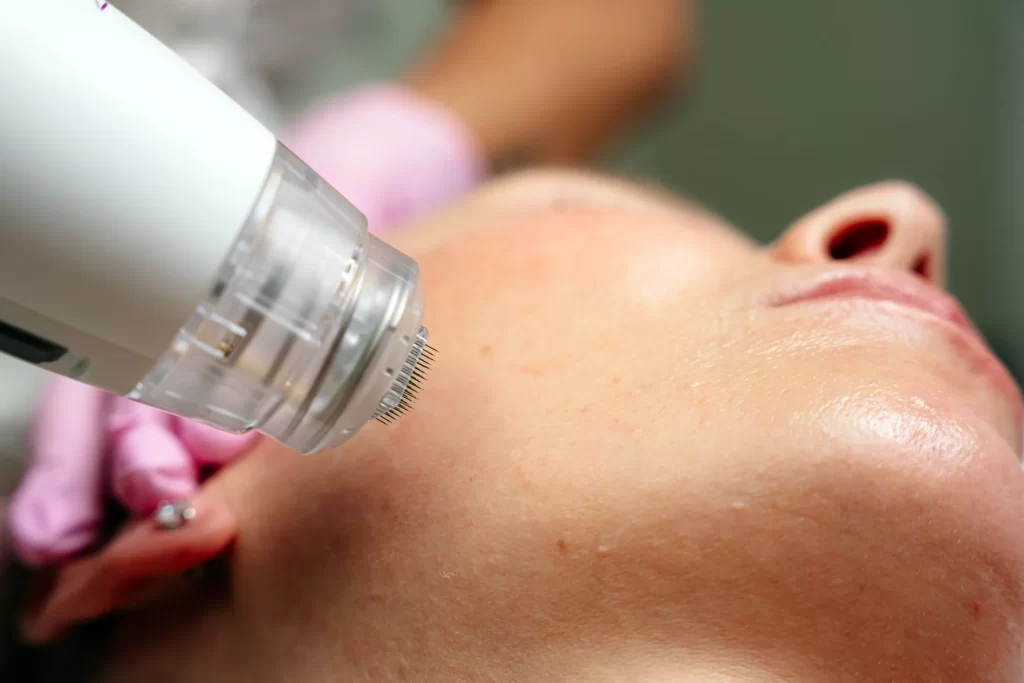
Radio Frequency microneedling is suitable for addressing a wide range of skin concerns, including wrinkles, fine lines, sagging skin, acne scars, and uneven texture.
This versatility makes it a valuable option for individuals with multiple concerns.
Compared to more aggressive laser treatments, Radio Frequency microneedling typically has minimal downtime.
The micro-injuries created by the needles are often less visible than those from resurfacing laser treatments, and the Radio Frequency energy helps to accelerate the skin’s healing process.
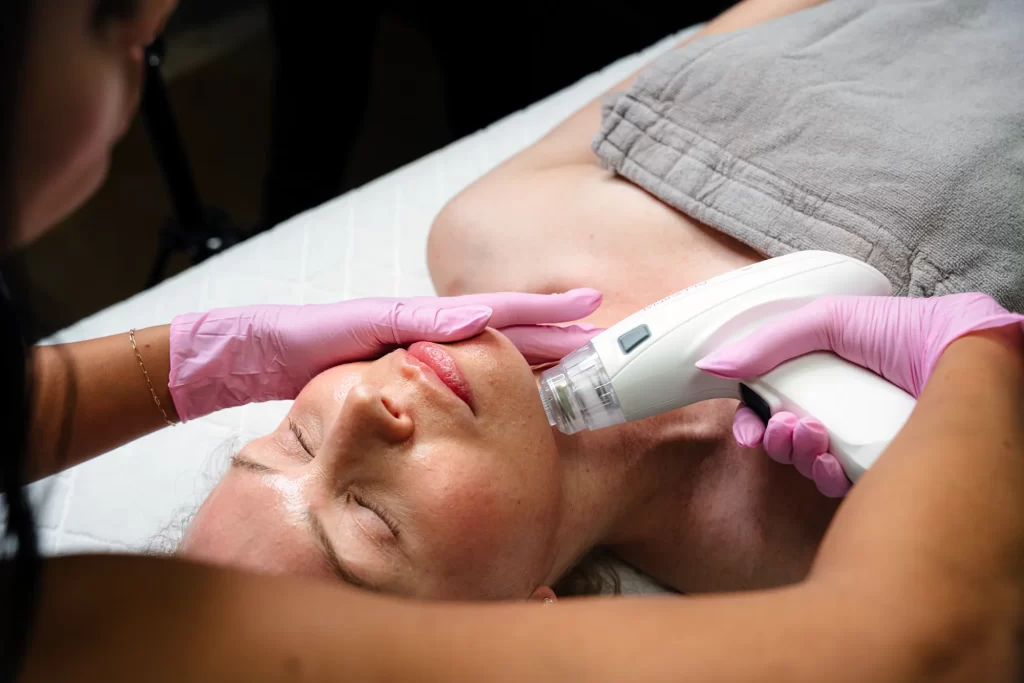
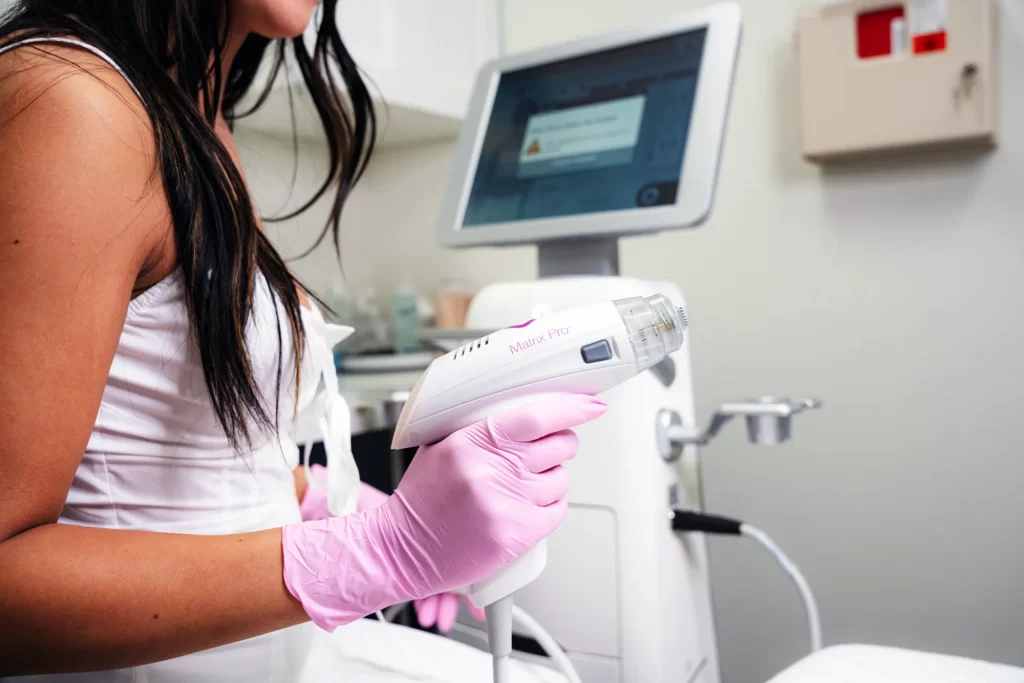
The Matrix Pro Radio Frequency Microneedling System by Candela was designed to correct, maintain, and restore skin at various stages of the aging journey.
This multi-application microneedling machine features the all-new Matrix Pro, Sublime, and Sublative RF applicators to deliver customized treatments based on patient needs.
The Matrix system is designed to resurface the skin and treat wrinkles, all while creating volume and strengthening skin structure.

Radio Frequency Body Contouring & Cellulite Reduction Treatments
Radiofrequency treatments can improve the look of cellulite by smoothing dimples and killing fat cells.
It uses radiation in combination with suction to heat up the tissue to increase blood flow, stimulate fibroblast production in the skin, and kill fat cells.


Radiofrequency works by inducing heat into the skin and adipose tissue. The heating effect in the dermal skin layers leads to connective tissue remodeling, which tightens the skin and helps to keep the results for much longer.
In addition, the heating of the adipose tissue will cause the adipocytes (fat cells) to sweat and shrink in size, thus its name: “circumferential reduction.”
Viora Radio Frequency Body Contouring and Radio Frequency Skin Tightening treatments were originally created to aid those who had lost a dramatic amount of weight as an alternative to surgery.
The results and responses from clients were so overwhelmingly positive that it became an incredibly popular service, even for those who have not experienced extreme weight loss.
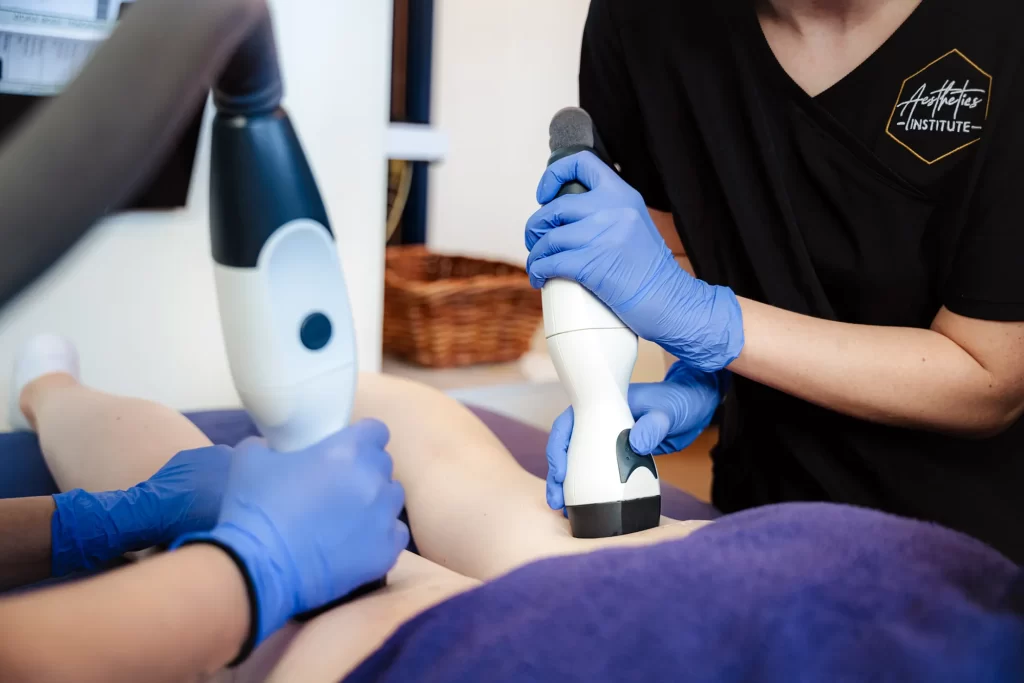
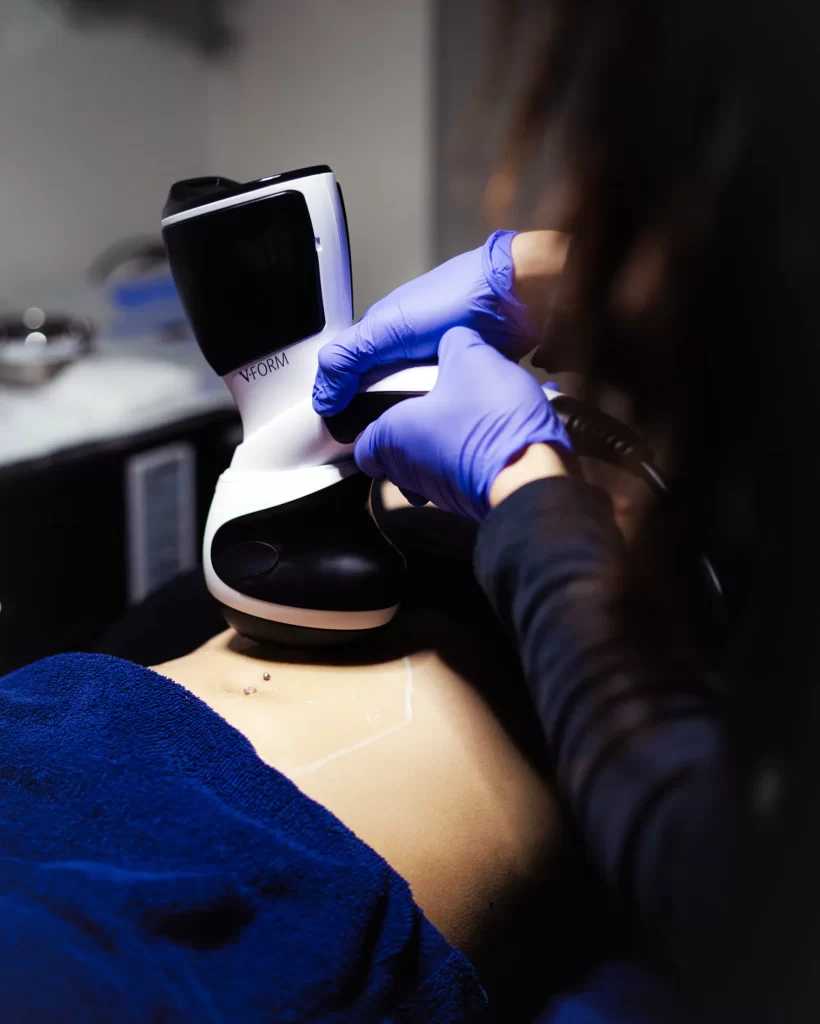
Radio Frequency Body Contouring is a non-invasive treatment that helps reduce cellulite, reduces excess fat, and tones and tightens loose skin.
This treatment can be performed over most of the body, with the exception of bony areas, tattoos, and breasts.
Watch students learning body contouring:
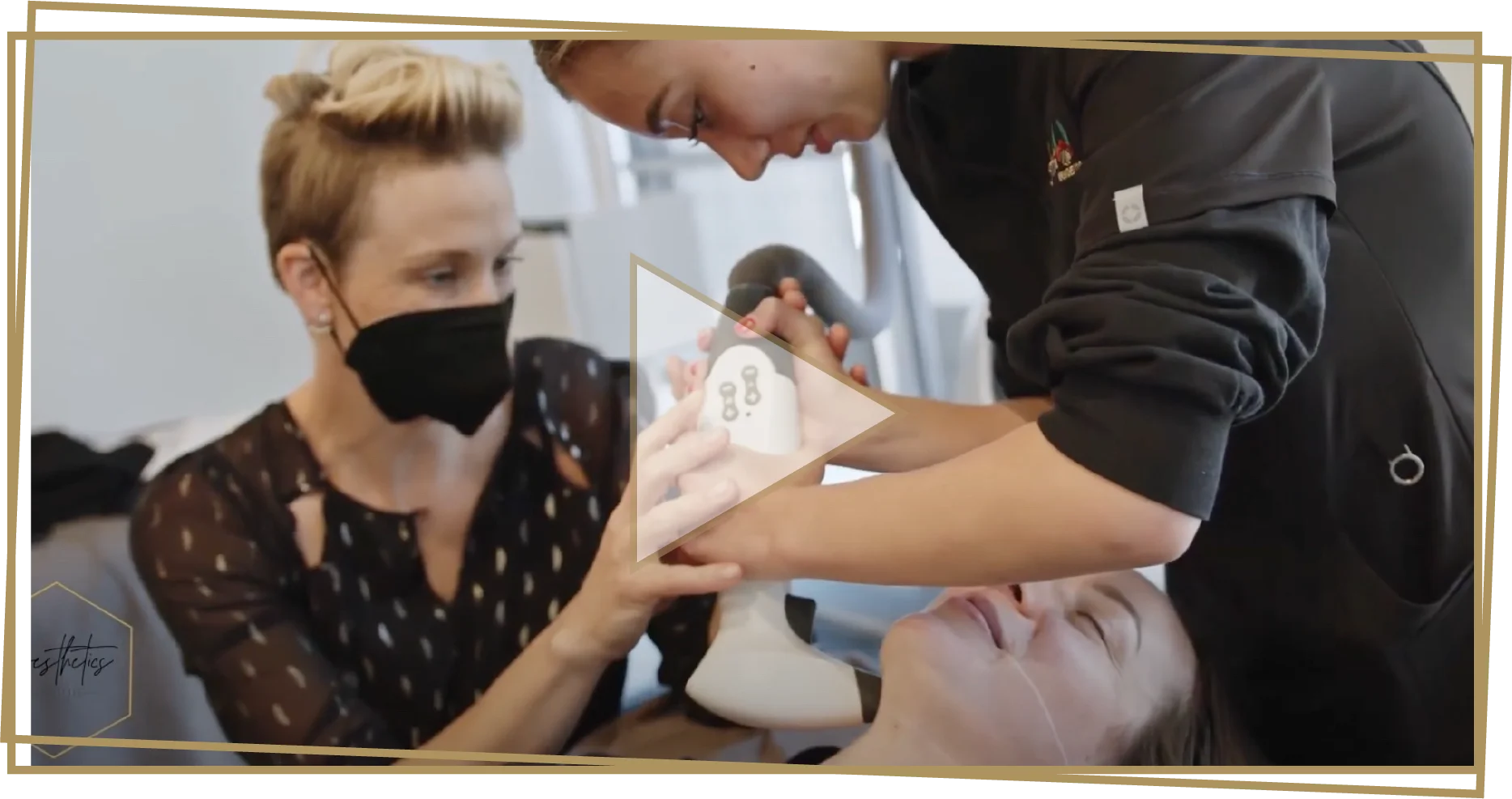
Radio Frequency Skin Tightening Treatments

Viora Reaction is a quick treatment that tightens and firms the skin on the face and body.
It utilizes Viora’s proprietary and revolutionary multi-RF technology, CORE (Channeling Optimized Radiofrequency Energy), to increase blood flow and stimulate fibroblast production in the skin.
By increasing fibroblast production, we increase the amount of collagen being produced in the skin. Thicker skin means tighter skin and less visible dimples.
As we age, we produce less collagen in the skin, which leads to skin laxity and the formation of wrinkles.
Skin tightening can be done as a stand-alone treatment or in combination with other collagen-stimulating treatments to address skin quality on the body.
Common areas include but are not limited to, the neck, abdomen, arms, and inner thighs.

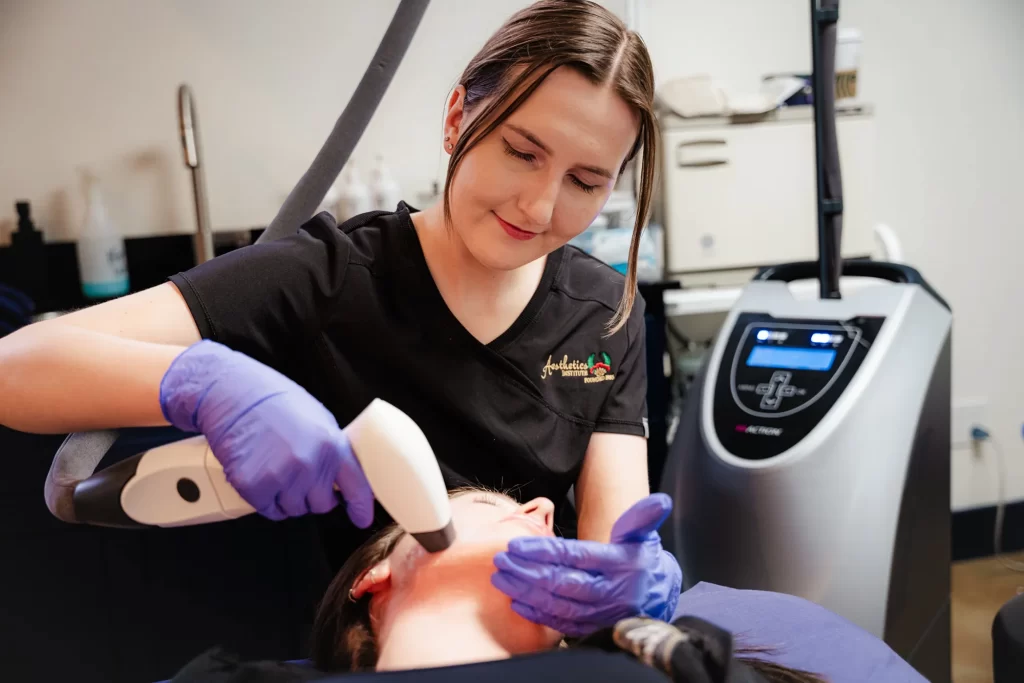
Viora Reaction is a quick treatment that tightens and firms the skin on the face and body.
It utilizes Viora’s proprietary and revolutionary multi-RF technology, CORE (Channeling Optimized Radiofrequency Energy), to increase blood flow and stimulate fibroblast production in the skin.
By increasing fibroblast production, we increase the amount of collagen being produced in the skin. Thicker skin means tighter skin and less visible dimples.
Radio-frequency technology works by inducing heat into the skin and adipose tissue.
The heating effect in the dermal skin layers leads to connective tissue remodeling, which tightens the skin and helps to keep the results for much longer.

Non-Ablative Fractional Laser Resurfacing Treatments
Non-ablative fractional laser resurfacing is a laser-based skin treatment that targets all signs of premature skin aging and scarring on the face and body.
With this treatment, we can focus on fine lines and wrinkles, deep pigmentation such as sun damage and melasma, and uneven skin texture from acne scarring, stretch marks, or surgical scarring.
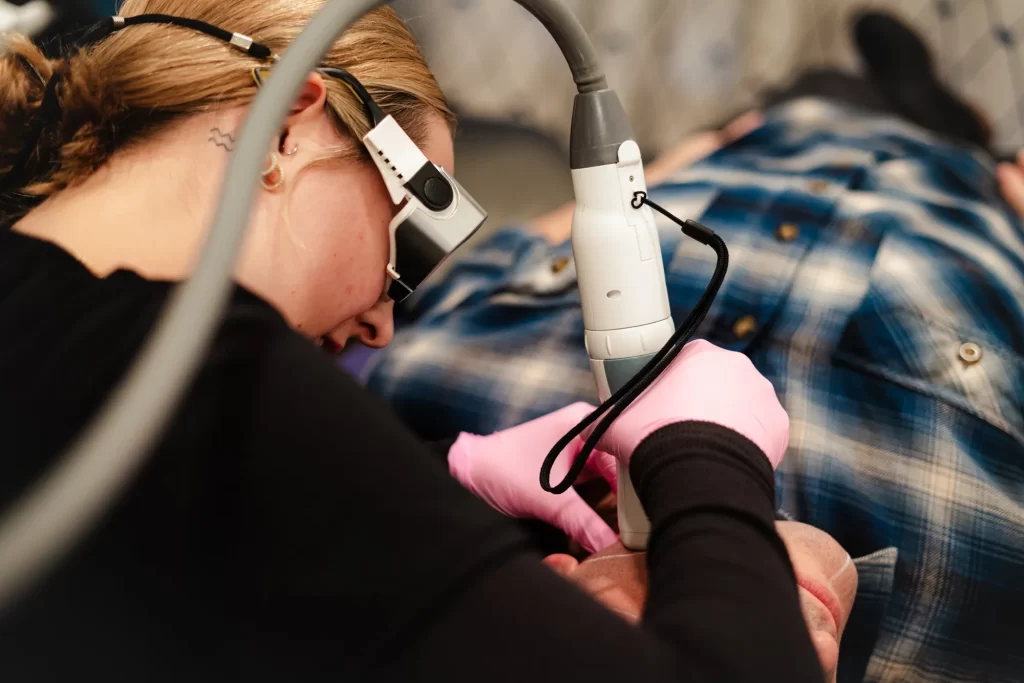
A collagen-stimulating laser beam is broken up into tiny micro-channels and then fired into the skin to create micro-injuries.
The body recognizes these channels of coagulated tissue as an injury and triggers the body’s natural wound-healing process to produce new collagen and elastin in the treated area.
Similar to Microneedling, fractional laser resurfacing creates micro-injuries to the skin while leaving healthy untreated skin in between.
This process allows the skin to heal and regenerate faster (typically 5-14 days) compared to traditional laser resurfacing, which has a downtime average of 30 days.
Although this service can be similar to microneedling, in many cases, it can be used in a far more aggressive manner.
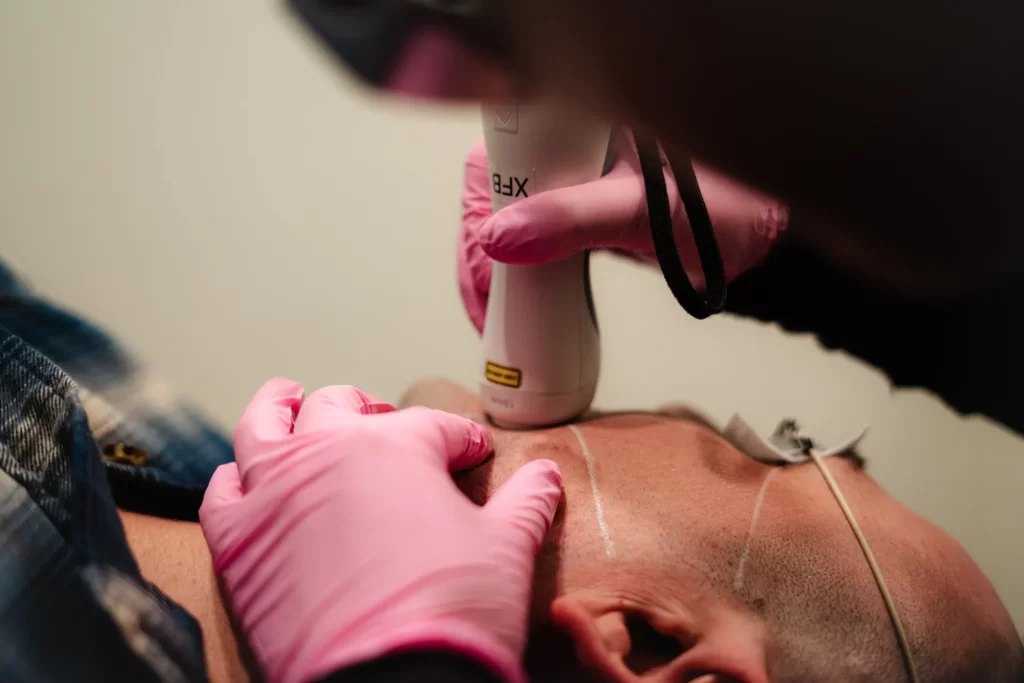
Watch students learning laser treatments:

Laser & IPL Hair Removal Treatments
Laser & IPL hair removal (also known as laser hair reduction) is the most common form of semi-permanent hair removal on the market.
Light is pulsed into the skin to target the melanin inside the hair follicle and deliver destructive energy to the cells inside the follicle.
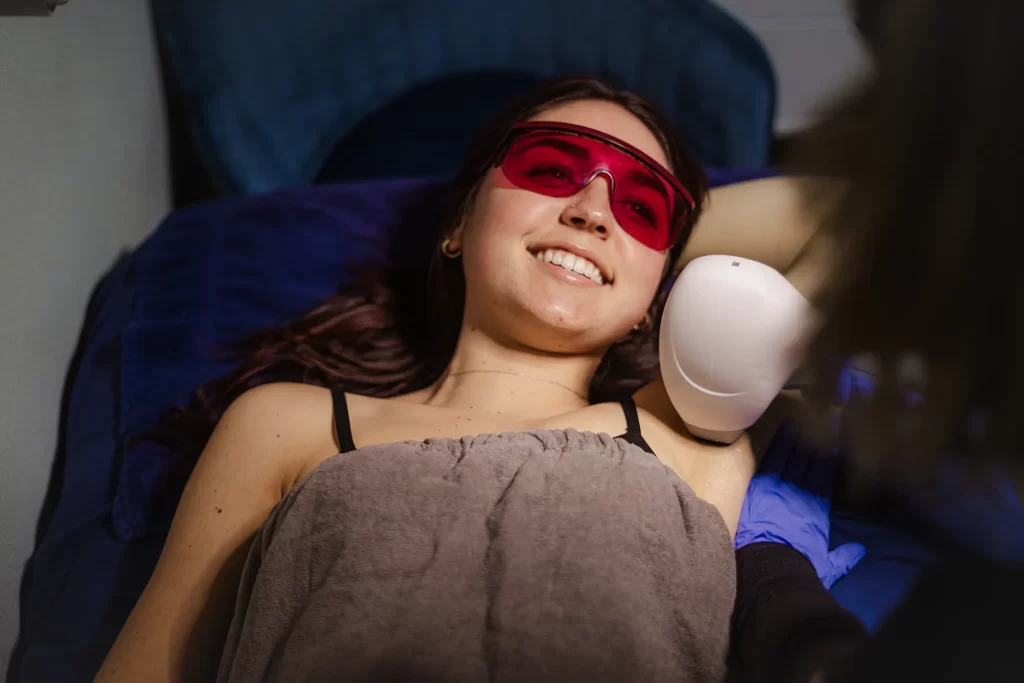
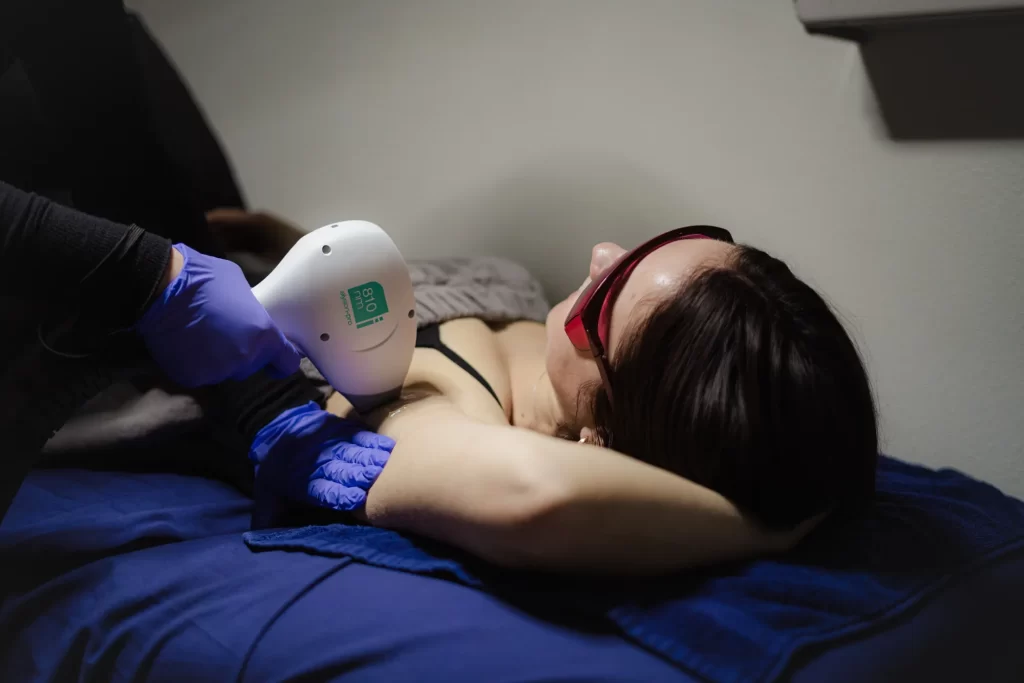
When determining the ideal candidate for laser hair removal, many factors come into consideration. This technology works by focusing on the pigment of the hair located within the skin.
Because of this, coarse dark black or brown hair on fair skin will typically have the best clearance; however, lasers can be used safely on darker skin types.
Non-ablative Laser Tattoo Removal Treatments
This treatment uses a non-ablative laser to remove unwanted tattoos.
The laser breaks up the large particles in the tattoo into much smaller particles that can then be carried away by the skin’s immune system.
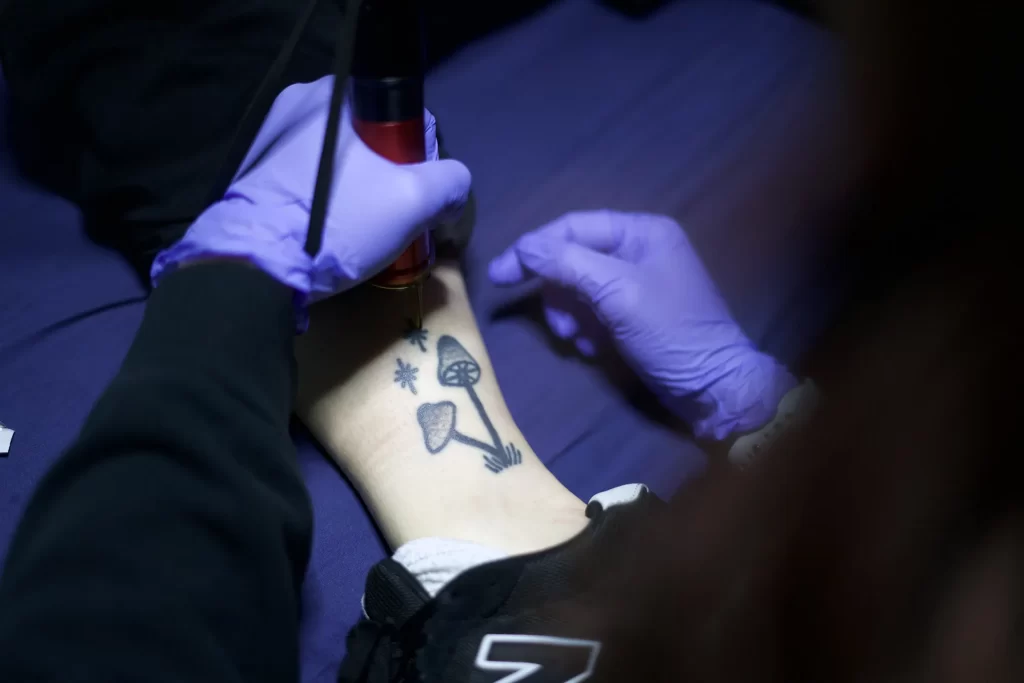
Watch students learning tattoo removal:

Laser tattoo removal works best on older tattoos that are black or darker in color. The number of treatments the client will need will depend on the tattoo’s age, size, and color(s).
The pigment of the client’s skin and how deep the tattoo pigment penetrates into their skin will also affect the removal technique and the number of treatments to achieve their desired results.
Advanced Dermaplaning Procedures
Advanced dermaplaning techniques provide a deep manual exfoliation of the skin using a sterile surgical blade to gently remove dead skin from the epidermis.
This service is a safe and quick way to improve the skin’s overall appearance and texture.

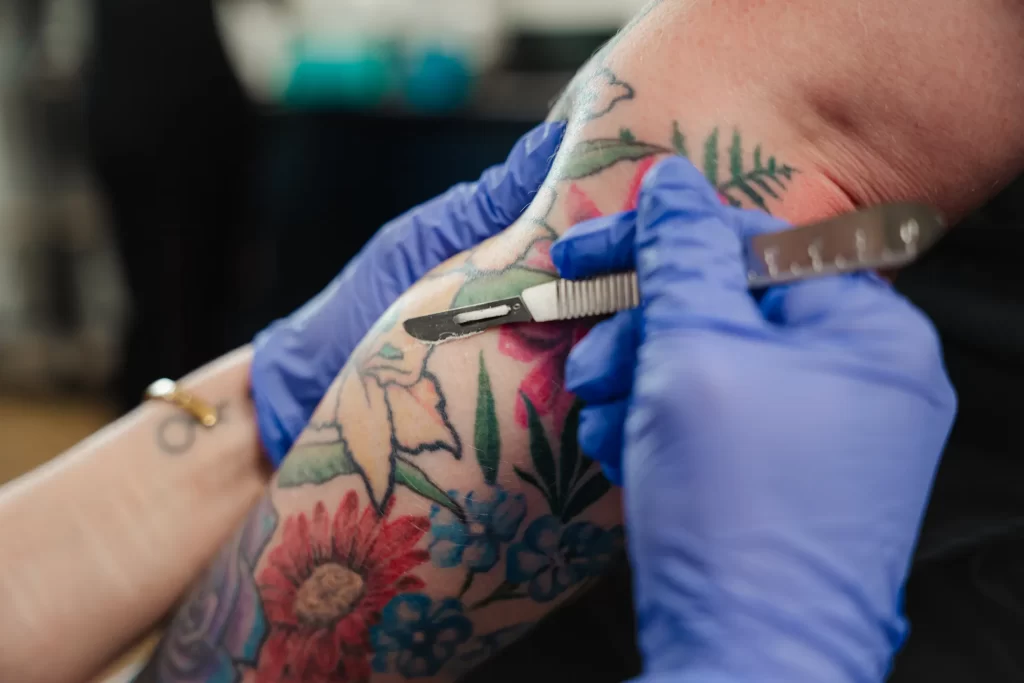
While students in our Masters Esthetics program learn dermaplaning skills, the techniques and procedures taught in our Advanced Esthetics program go beyond those general skills.
For estheticians in our Advanced Esthetics program that did not learn basic dermaplaning skills at their previous school in their general esthetics course, we also provide additional training and practice to those who need to learn and build their proficiency at dermaplaning.
Using a disposable surgical-grade scalpel, you will learn to thoroughly go over the client’s desired treatment area and remove any dull and lackluster skin.
This treatment leaves the skin soft and smooth with the added benefit of removing peach fuzz.
Although the face and neck are some of the more popular areas for dermaplaning, some other suggested treatment areas are the backs of the arms, legs, and buttocks.
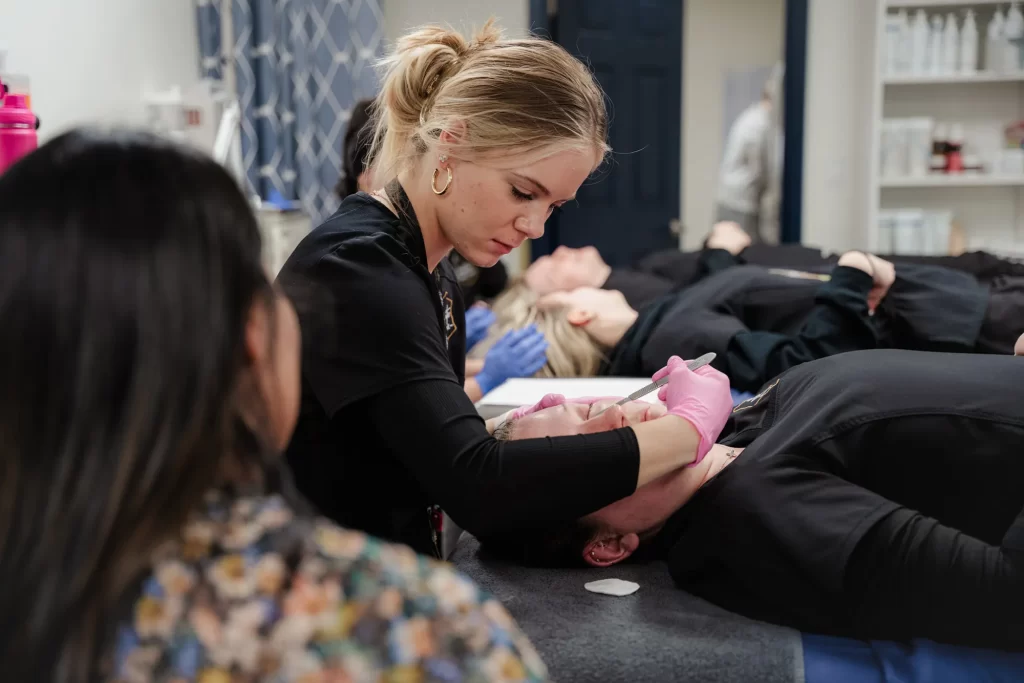
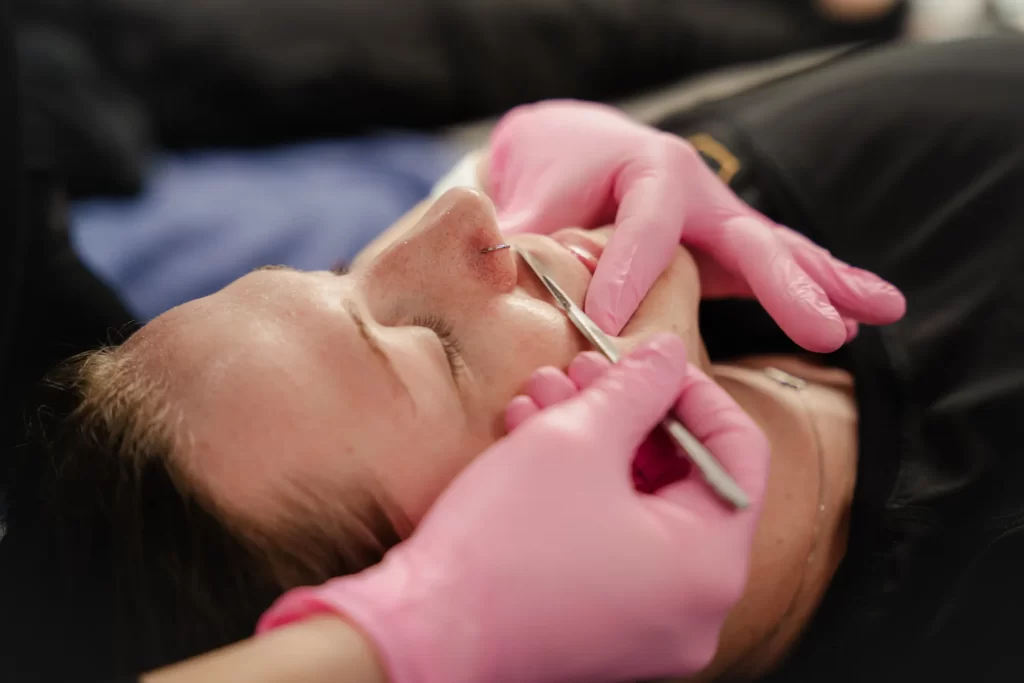
Watch students learning dermaplaning:
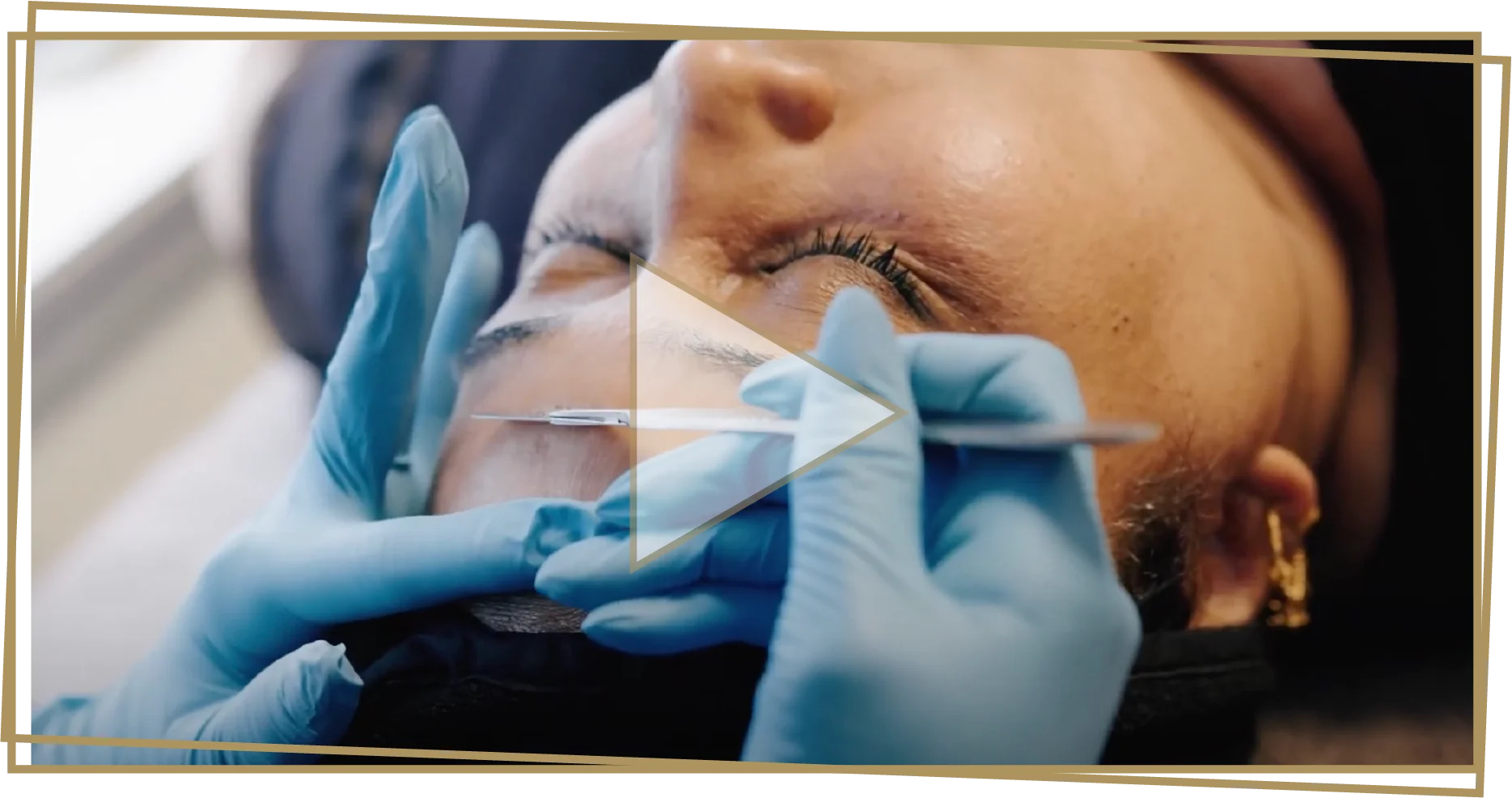
DiamondGlow Microdermabrasion Treatments
DiamondGlow microdermabrasion is a gentle, non-invasive skin resurfacing treatment that exfoliates, extracts, and infuses a custom serum into the skin when it’s most receptive.
It uses suction and a real diamond-crusted tip to gently remove dead skin cells from the surface of the skin for a radiant, healthy-looking glow.

DiamondGlow is great for anyone looking to target acne, signs of aging like fine lines and wrinkles, pigmentation, or overall skin rejuvenation.
This treatment includes a full skin analysis, DiamondGlow treatment, hydrating mask, and custom product choices.
Benefits from this service include smoothing rough skin, softening fine lines and wrinkles, reducing the appearance of scars and dark spots, and reducing the look of pores.
It’s suitable for most skin types and skin conditions because it uses physical exfoliation rather than acid-based exfoliation.
The DiamondGlow device applies suction to the skin to lift it to the diamond-crusted tip and then glides along the skin to remove dead skin cells.
As the dead skin is being removed, it is bathed in hydration, antioxidants, and growth factors when it’s most receptive.

Watch students learning microdermabrasion:
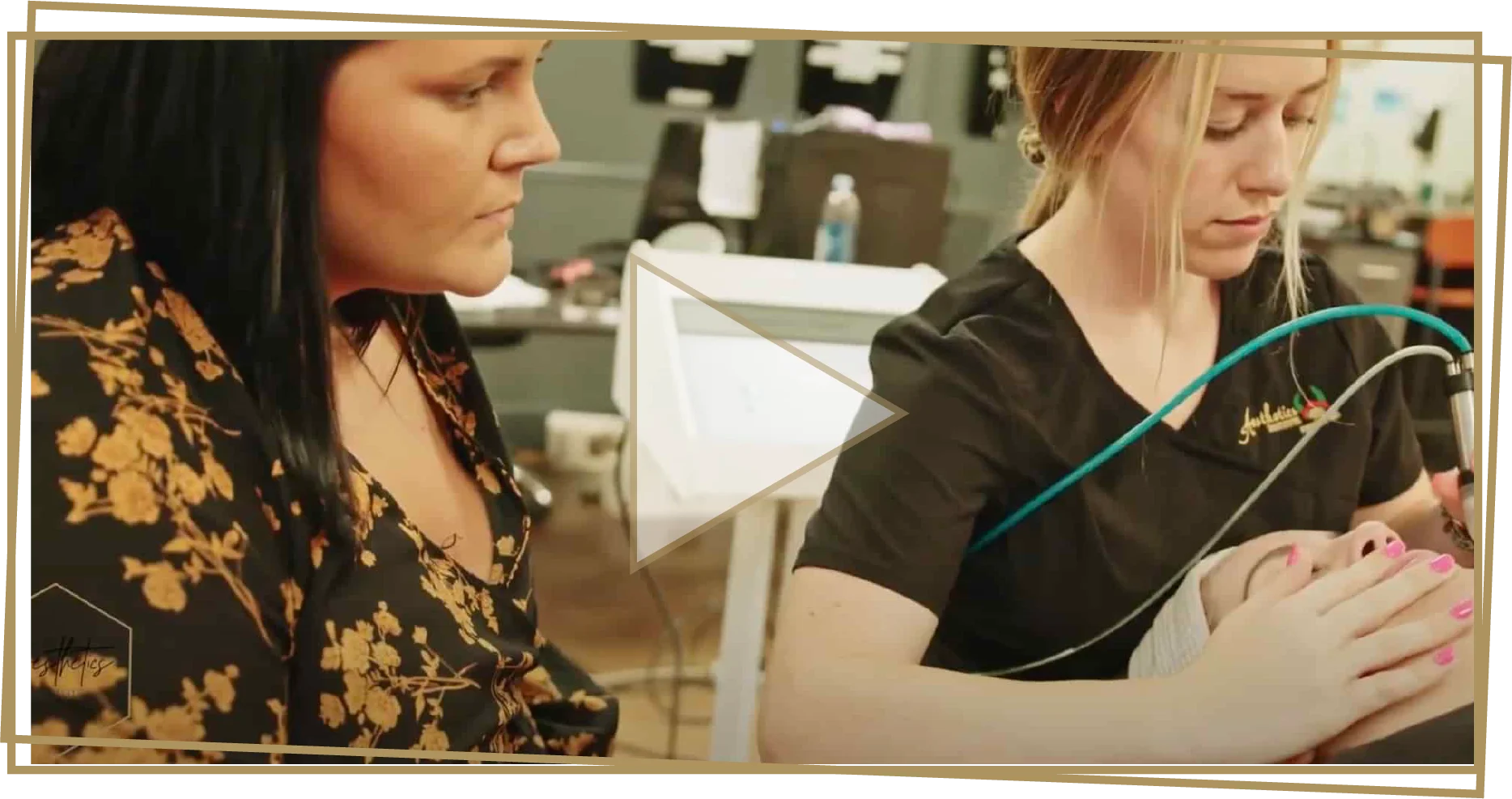
One or two passes may be performed on the skin depending on what is being targeted and what the specific client’s skin can handle.
After the treatment is complete, the skin will feel glowy, hydrated, and fresh.
Advanced Skin Analysis Technologies
Advanced skin analysis technologies include machines that can take clinical photos from multiple angles and also see below the surface of the skin.
This can be helpful in showing clients sun damage that exists below the surface of the skin that they may not be able to see with their naked eye.
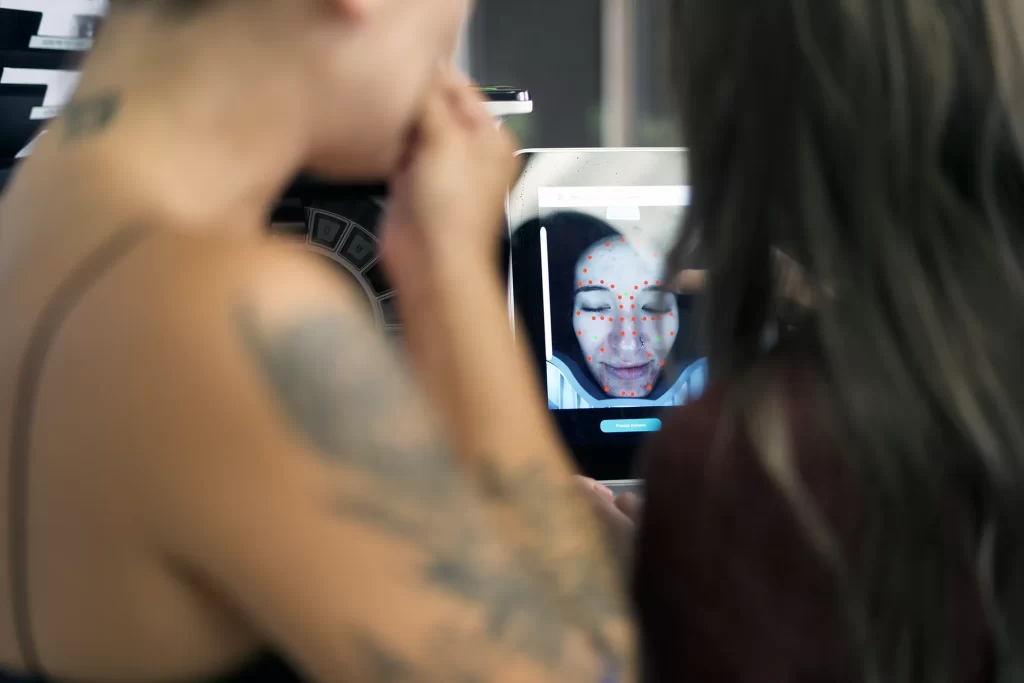

It can also be helpful to long-term treatment planning because it helps providers decide in which order to stack client treatments.
Often, these technologies can store original clinical photos and updated clinical photos to show clients their “before and after” photos and track success.
One piece of technology used to gather this client data in our Advanced Esthetics program is the Optic Slim Aesthetic Imaging Skin Analyzation Machine.
This device utilizes more than ten different skin indications to best provide the most accurate recommendations for client facial care.
These areas of indication include pores, blemishes, wrinkles, texture, UV porphyrins, UV pigmentation, UV moisture, sensitive skin areas, brown areas, UV damage, skin aging simulation, and result simulation.
Jessner's Advanced Chemical Exfoliation
Jessner’s Chemical Peel combines some of our favorite acids into one treatment.
It contains a combination of 14% Resorcinol, 14% Lactic, and 14% Salicylic Acid to target acne, fine lines and wrinkles, hyperpigmentation, and overall skin tone and texture.

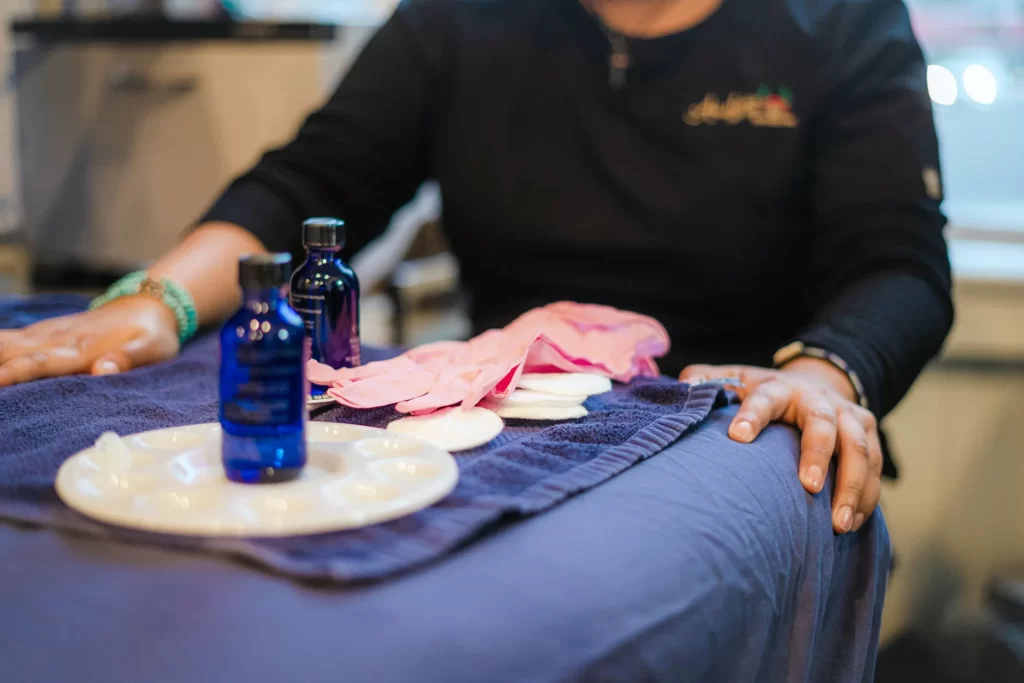
Advanced chemical peels are in a league all of their own and should not be confused with some of the lower-level chemical peels that general estheticians can perform.
These chemical peels are typically more aggressive and, depending on the chemical and the client’s skin type, can have a dramatic peeling phase during the recovery and healing process.
Chemical peels have been the traditional go-to for anti-aging treatments. However, they offer benefits to many different skin conditions and can help improve acne, texture irregularities, pigmentation, and overall skin tone.
Acids typically break down into one of three different categories: Alpha Hydroxy Acids (AHAs), Beta Hydroxy Acids (BHAs), and designer peels.
Alpha Hydroxy Acids have a smaller molecular size, allowing them to penetrate into the deeper layers of the skin and treat anti-aging conditions such as thinning skin, fine lines, wrinkles, pigmentation, and elasticity.
Beta Hydroxy Acids have a larger molecular structure and treat more superficial conditions, such as acne, tone, texture, and superficial pigmentations, such as post-inflammatory hyperpigmentation due to acne or injury.

The last category of acid is considered “designer” or combination chemical peels, which consist of a combination of multiple acids.
This combination could contain an AHA and BHA together and is meant to treat particular skin conditions or skin types.
?
MandeliClear Advanced Chemical Exfoliation
Mandelic Acid is our go-to peel for treating darker skin types and skin of color.
This gentle Alpha-Hydroxy peel is amazing for lightening melasma, acne scarring, and post-inflammatory hyperpigmentation (PIH).
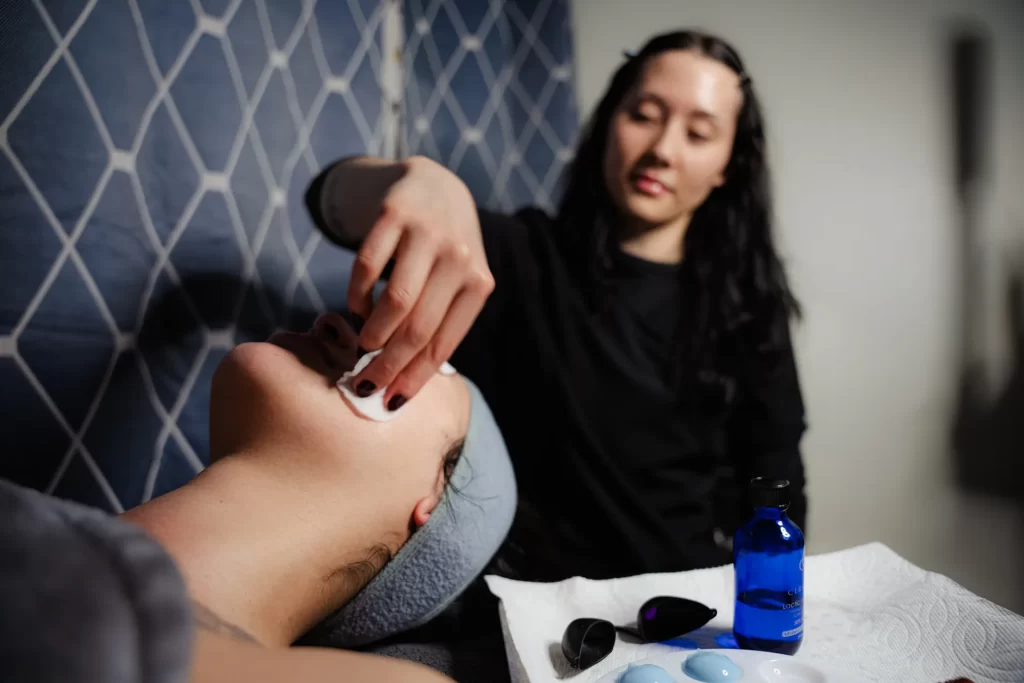
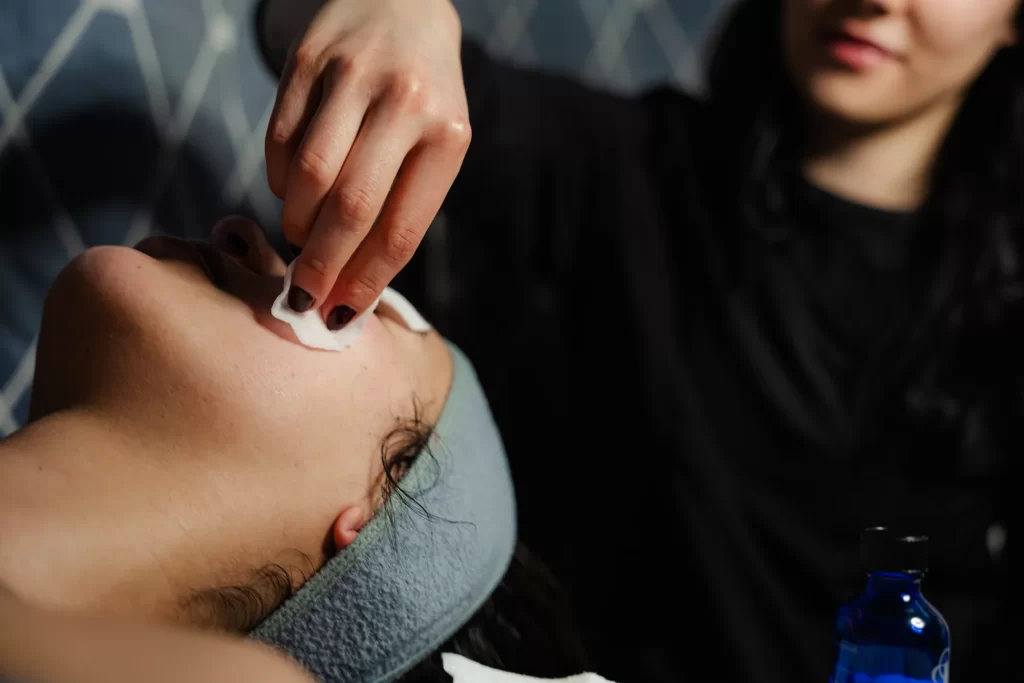
Advanced chemical peels are in a league all of their own and should not be confused with some of the lower-level chemical peels that general estheticians can perform.
These chemical peels are typically more aggressive and, depending on the chemical and the client’s skin type, can have a dramatic peeling phase during the recovery and healing process.
Chemical peels have been the traditional go-to for anti-aging treatments. However, they offer benefits to many different skin conditions and can help improve acne, texture irregularities, pigmentation, and overall skin tone.
Acids typically break down into one of three different categories: Alpha Hydroxy Acids (AHAs), Beta Hydroxy Acids (BHAs), and designer peels.
Alpha Hydroxy Acids have a smaller molecular size, allowing them to penetrate into the deeper layers of the skin and treat anti-aging conditions such as thinning skin, fine lines, wrinkles, pigmentation, and elasticity.
Beta Hydroxy Acids have a larger molecular structure and treat more superficial conditions, such as acne, tone, texture, and superficial pigmentations, such as post-inflammatory hyperpigmentation due to acne or injury.

The last category of acid is considered “designer” or combination chemical peels, which consist of a combination of multiple acids.
This combination could contain an AHA and BHA together and is meant to treat particular skin conditions or skin types.
DermaFrost Advanced Chemical Exfoliation
Salicylic acid at 25% is a beta-hydroxy acid that is antibacterial, anti-inflammatory, and cuts through the oil in the skin.
The advanced strength of this peel makes it a deeper exfoliation and can target problems deeper in the skin.
This peel is especially helpful for dealing with active acne, overall skin tone and texture, deeper wrinkles, hyperpigmentation, and a loss of elasticity.

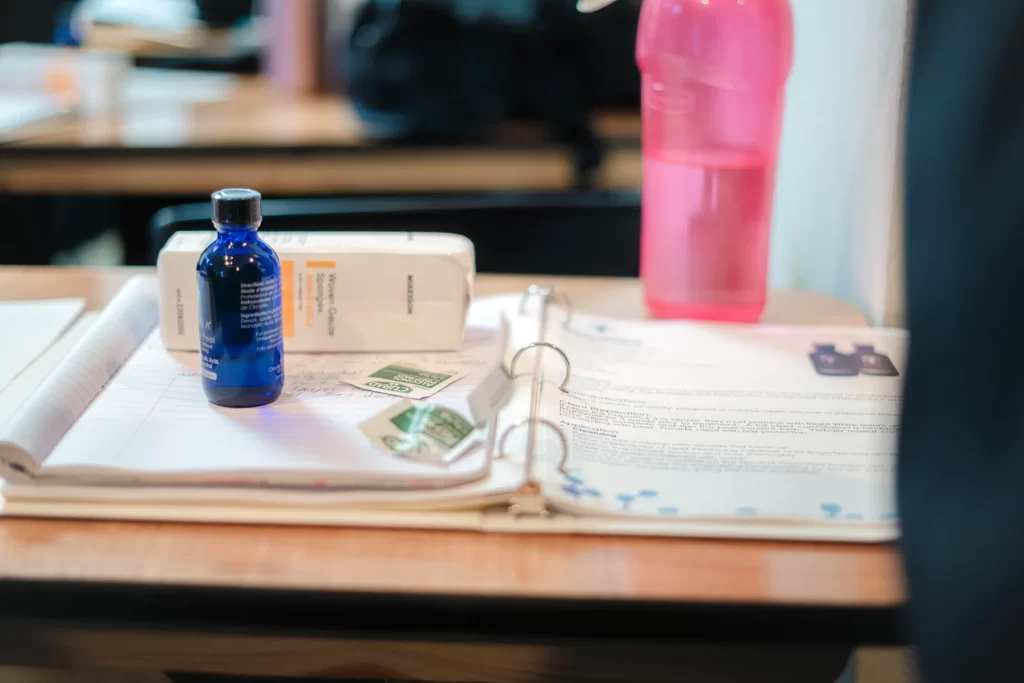
Advanced chemical peels are in a league all of their own and should not be confused with some of the lower-level chemical peels that general estheticians can perform.
These chemical peels are typically more aggressive and, depending on the chemical and the client’s skin type, can have a dramatic peeling phase during the recovery and healing process.
Chemical peels have been the traditional go-to for anti-aging treatments. However, they offer benefits to many different skin conditions and can help improve acne, texture irregularities, pigmentation, and overall skin tone.
Acids typically break down into one of three different categories: Alpha Hydroxy Acids (AHAs), Beta Hydroxy Acids (BHAs), and designer peels.
Alpha Hydroxy Acids have a smaller molecular size, allowing them to penetrate into the deeper layers of the skin and treat anti-aging conditions such as thinning skin, fine lines, wrinkles, pigmentation, and elasticity.
Beta Hydroxy Acids have a larger molecular structure and treat more superficial conditions, such as acne, tone, texture, and superficial pigmentations, such as post-inflammatory hyperpigmentation due to acne or injury.

The last category of acid is considered “designer” or combination chemical peels, which consist of a combination of multiple acids.
This combination could contain an AHA and BHA together and is meant to treat particular skin conditions or skin types.
Medical Terminology & Charting
Advanced estheticians often work closely alongside medical providers and can even share clients in the same facility.
It is important for estheticians to understand medical terminology for continuity and clarity between the different fields.
Using medical terminology is also a way to protect providers in the event of an adverse reaction because it can be easily understood if a client needs to be referred out.
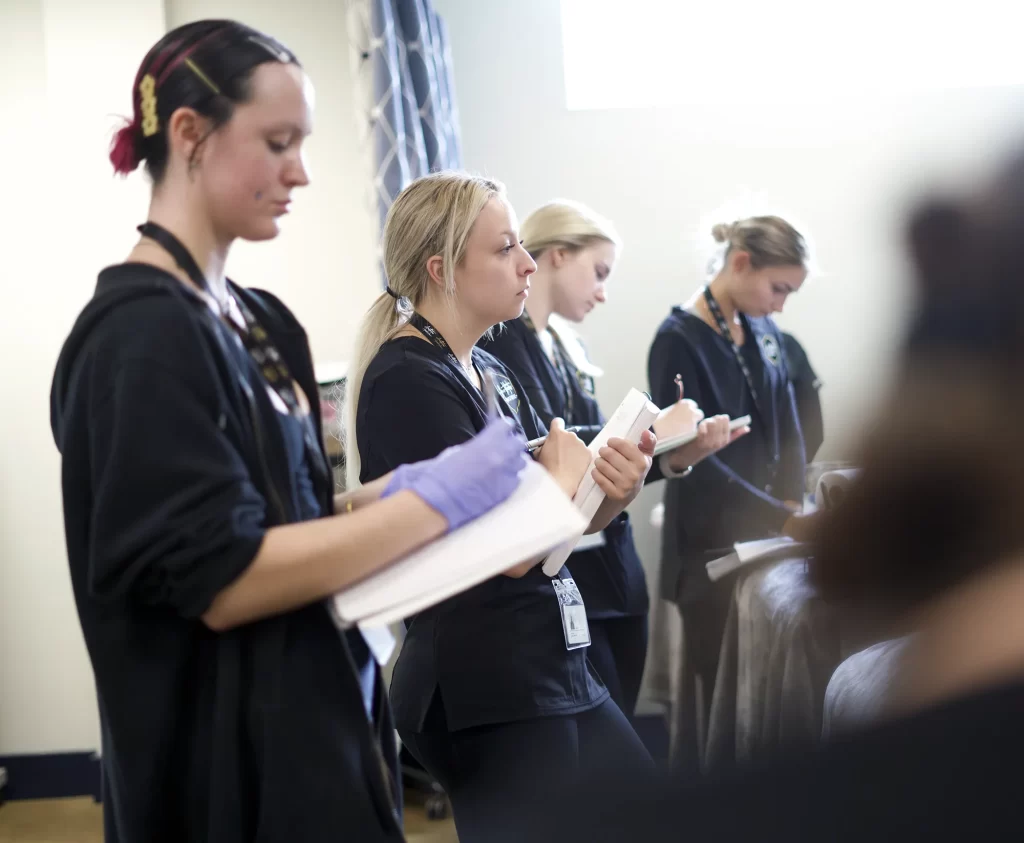
Charting is an important part of client care because it protects both the client and the providers.
We teach our Advanced estheticians to take careful notes with clients and to use terminology that can be understood by all providers in a professional setting.
Pre & Post-Client Care Protocols
In advanced esthetics, pre and post-client care is just as important as the treatment itself.
Not only can improper preparation or follow-up to a treatment produce lackluster results, but it can also even lead to adverse reactions, such as hyper or hypopigmentation and scarring.


CPR & First Aid Certification
In this portion of the course, you will become certified in both CPR and First Aid.
Protecting yourself and your clients from exposure to bloodborne pathogens is important to keeping your business safe and hygienic.
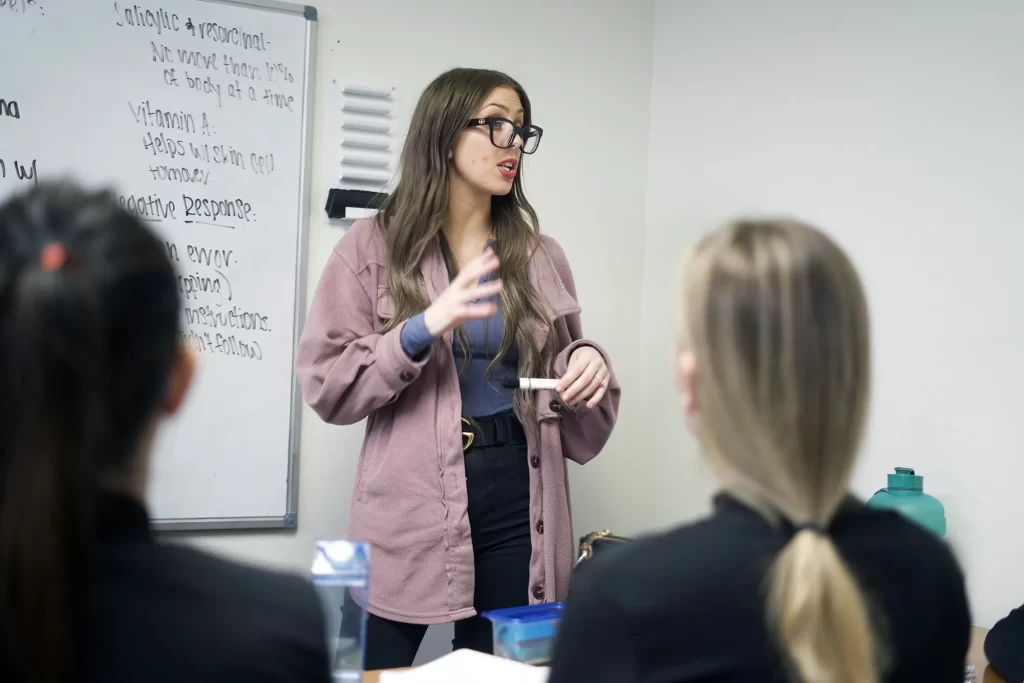
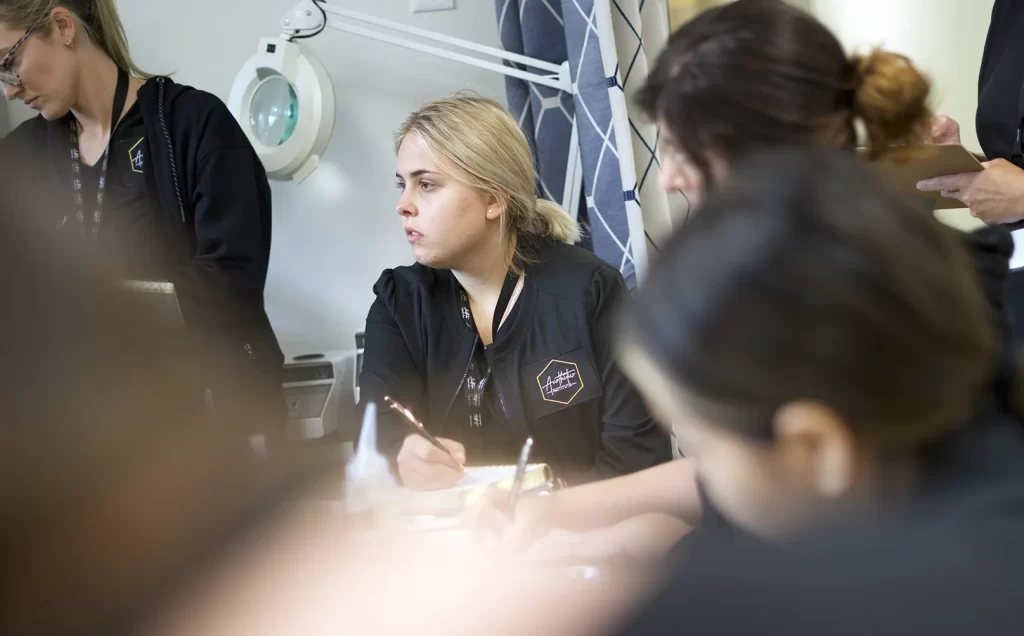
Clinical Photography Skills
Clinical photography is used for facials, body treatments, and advanced skin treatments.
This is used as a tool to both track progress for client success and to protect providers in the event that an adverse event occurs.

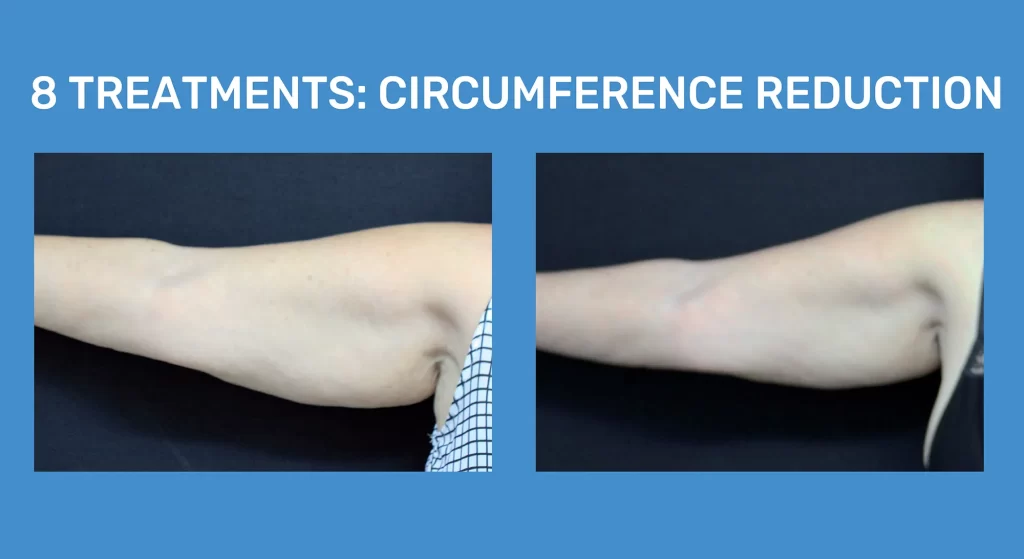
Being able to take high-quality clinical photographs is a great skill and can be used as an invaluable tool to show before/after photos to potential clients, both in-house and online.
Being able to show people what they can expect is a great tool for selling packages and also to help show them what continued treatments can achieve.
Some advanced esthetics services can have dramatic results after one treatment, and some take time to provide the results your client may be seeking.
Clinical photographs, taken in a very specific style and sequence, can help you provide visible evidence to your clients of how far they have progressed in their treatments from their initial consultation.

Client Consultations & Procedures
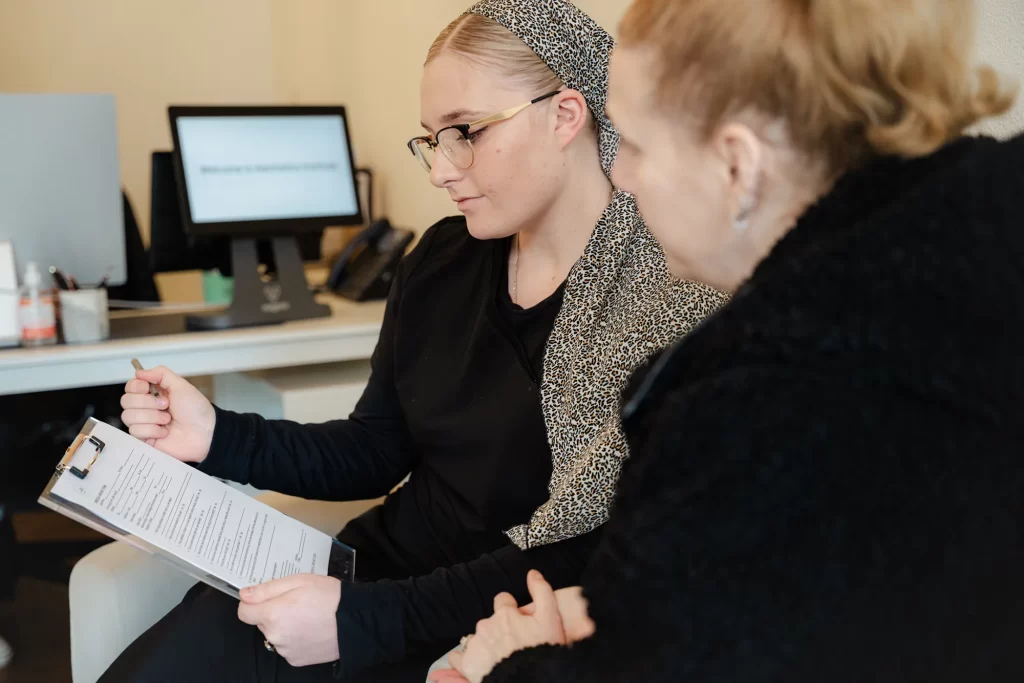

For clients, this can be a great opportunity for them to see a realistic timeline for their desired results, see a realistic budget of how much they should expect to spend, see what skincare they may need for long-term results, and to see what other treatments they may need in addition to the ones they are interested in.
Having a professional lay out a treatment plan can be helpful for clients who have a specific timeline or are unsure of what they want to accomplish first.
From a provider’s perspective, consultations are a great way to get to know your client and make smart client selections. Not every client will be a good candidate for every treatment, even if they believe they would benefit from it.
Some clients will be very good at following post-care, and some will not, which should be a factor in client selection. This helps protect providers and overall client satisfaction.
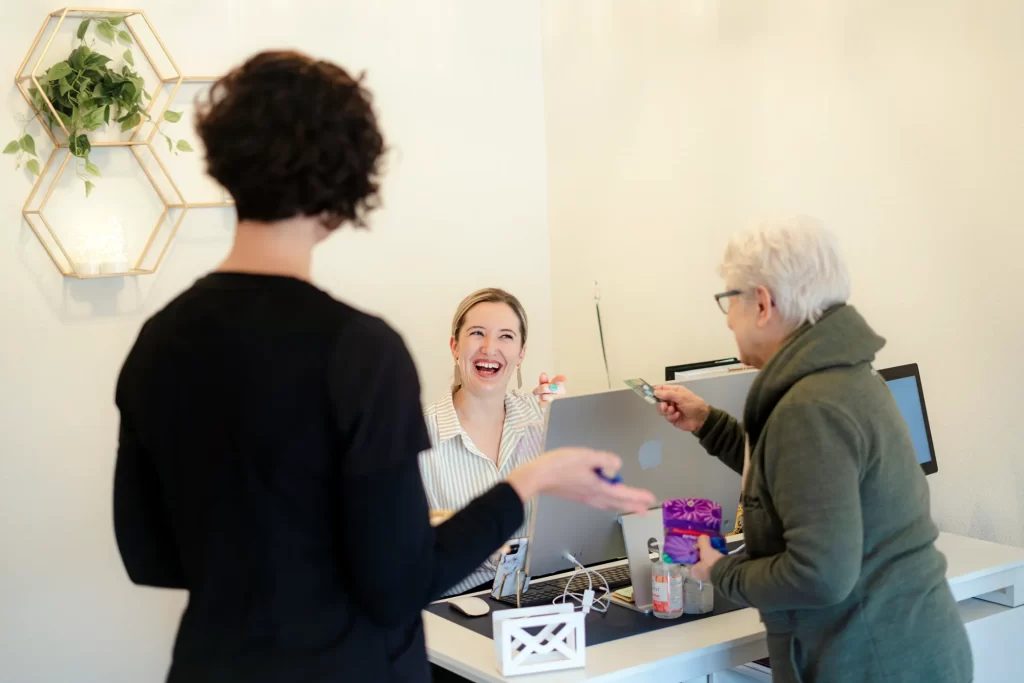
Laser Safety Training Officer Guide
Safety is the number one concern throughout the entire Advanced Esthetics program.
Learning the proper safety protocols when it comes to lasers is absolutely imperative when becoming an advanced esthetician.
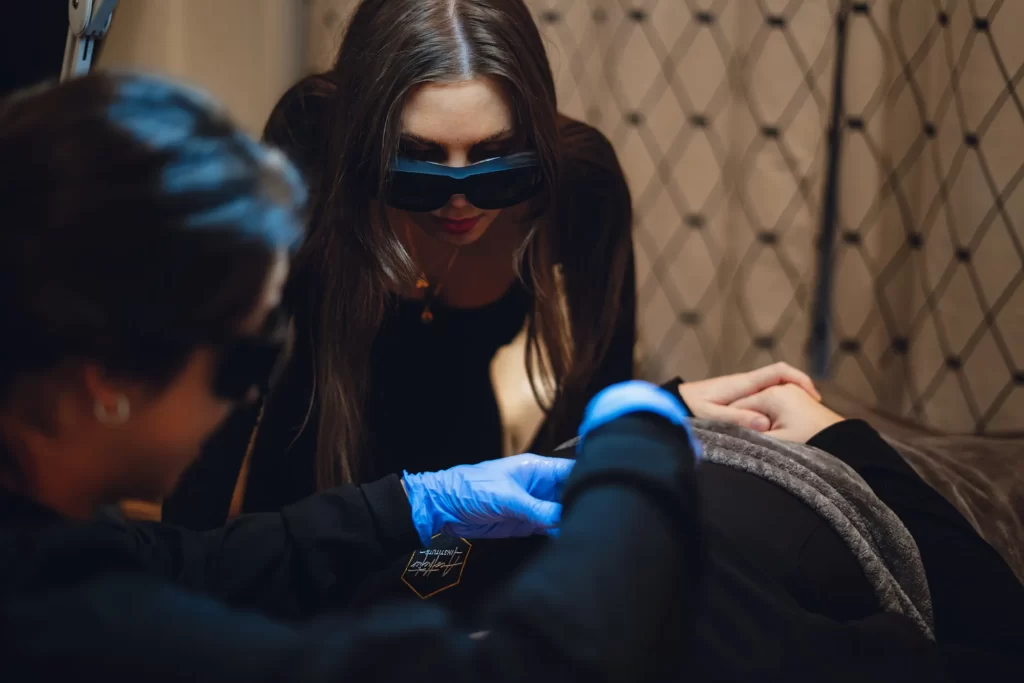

Services, Skills, and Modalities included in Advanced Esthetics:
- Intense Pulsed Light (IPL) Photorejuvenation & Dyschromia
- Microneedling Treatments and Modalities
- Radio Frequency Microneedling Treatments
- Radio Frequency Body Contouring & Cellulite Reduction Treatments
- Radio Frequency Skin Tightening Treatments
- Non-Ablative Fractional Laser Resurfacing Treatments
- Laser & IPL Hair Removal Treatments
- Non-Ablative Laser Tattoo Removal Treatments
- Advanced Dermaplaning Procedures
- DiamondGlow Microdermabrasion Treatments
- Advanced Skin Analysis Technologies
- Jessner's Advanced Chemical Exfoliation
- MandeliClear Advanced Chemical Exfoliation
- DermaFrost Advanced Chemical Exfoliation
- Medical Terminology & Charting
- Pre & Post-Client Care Protocols
- CPR & First Aid Certification
- Clinical Photography Skills
- Client Consultations & Procedures
- Laser Safety Training Officer Guide
